Everything you need to know about travelling in Afghanistan. Where to visit, how to get around, safety, and more are covered in this comprehensive travel guide.
Wondering what it’s like to travel in Afghanistan? You’ve come to the right place.
I’ve spent over 5 weeks independently solo travelling all over the country – from the bazaars of Herat to the remote Wakhan Corridor. I absolutely adore Afghanistan and it’s people and would love for more travellers to be able to experience it for themselves.
In this Afghanistan travel guide, you’ll find all of the practical info you need to know about travel in Afghanistan. Let’s get right into it!
Contents
- 1 Why travel to Afghanistan?
- 2 Before you visit Afghanistan
- 3 Getting to Afghanistan
- 4 Places to visit in Afghanistan
- 5 When to visit Afghanistan
- 6 Internet in Afghanistan
- 7 Female Travel in Afghanistan
- 8 Solo Travel in Afghanistan
- 9 How much does travel in Afghanistan cost?
- 10 Couchsurfing in Afghanistan
- 11 Resources for travel to Afghanistan
- 12 Afghanistan Travel Guide Wrap-up
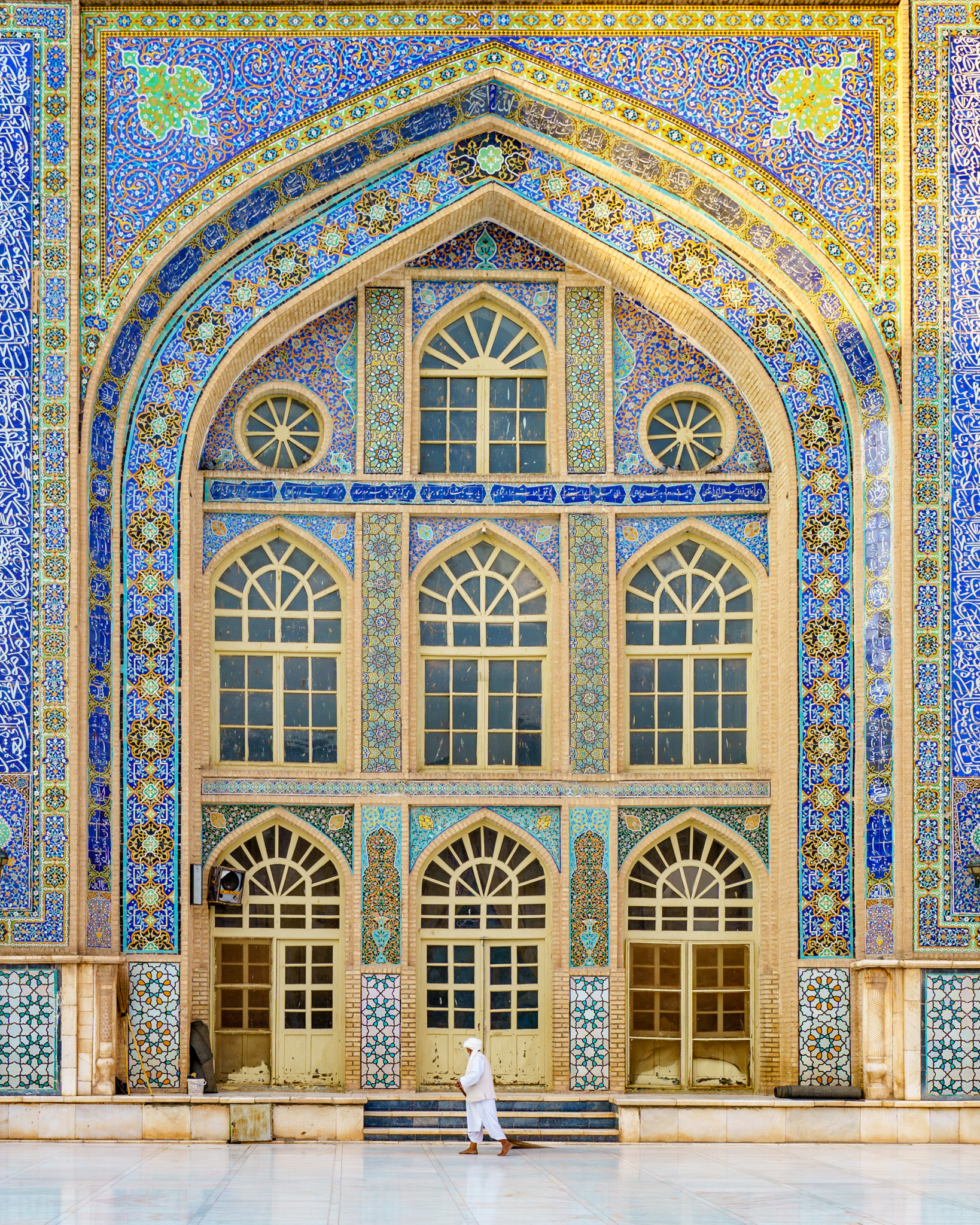
Why travel to Afghanistan?
This is a question that I’ve been asked a lot, and I understand why.
Western media only portrays Afghanistan as a poor and war-torn nation. While they’re not wrong, Afghanistan is so so so much more than that.
Afghanistan is a land where cultures, languages, and people collide – it’s where the Middle East, the Indian Subcontinent, and Central Asia blend together. When you visit Afghanistan, you’ll get to taste Persian food, hang out with Pashto speakers, and smoke hash with Uzbeks.
Afghanistan is also insanely beautiful. The Hindu Kush mountains run through the heart of the nation and offer scenery that you can’t find anywhere else. Further east in the Wakhan Corridor are some massive 7,000-meter peaks that tower above the villages at their feet.
I don’t recommend Afghanistan as a travel destination for everyone. It’s a challenging country to travel in, and it is not safe.
But if you’re up for it, then a visit to Afghanistan will be unforgettable. I promise.
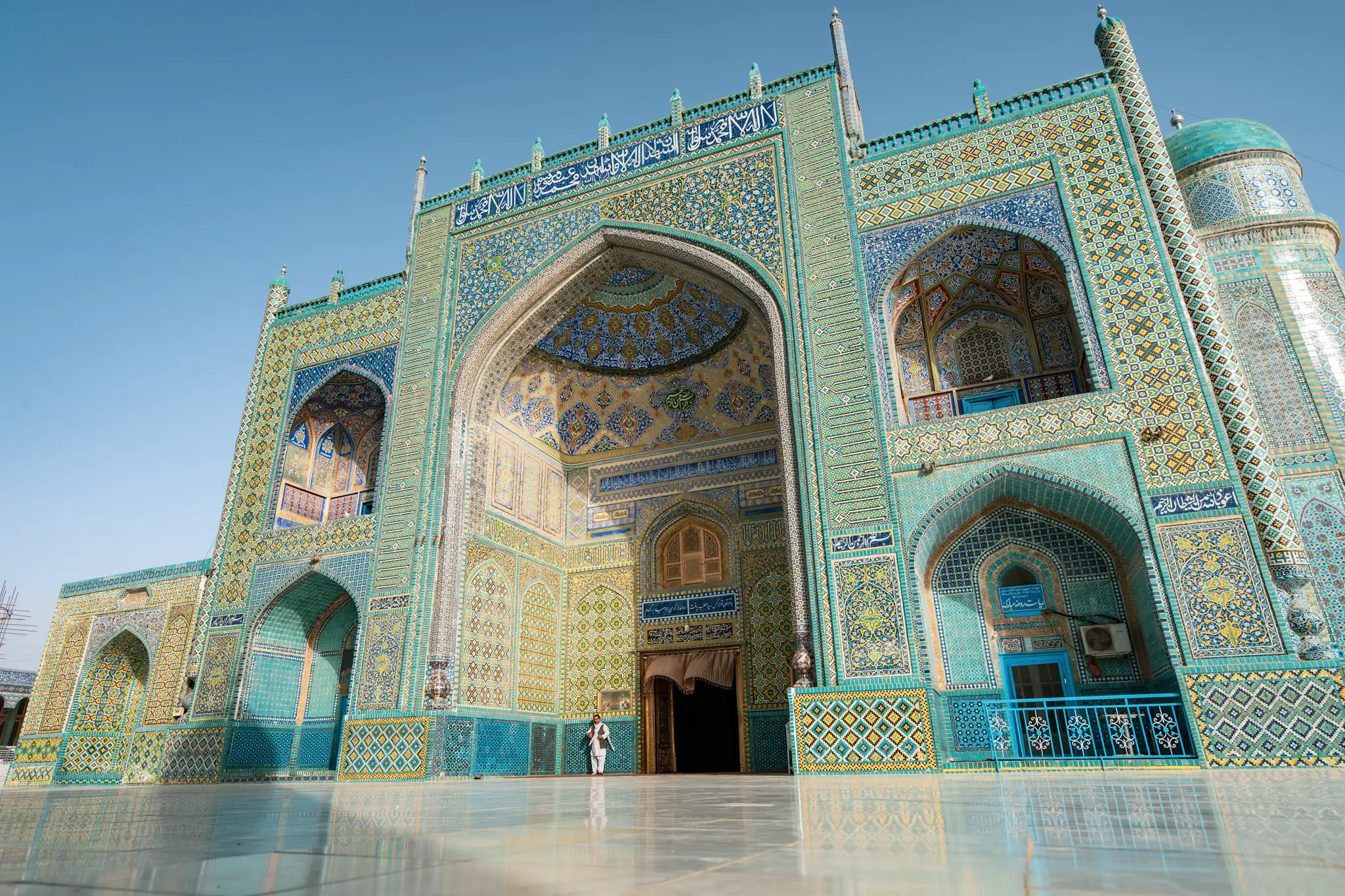
Before you visit Afghanistan
Here are a few things that you need to know about Afghanistan before your visit.
Is Afghanistan safe?
This is probably one of the first things on your mind when you think about heading to Afghanistan.
Afghanistan is not a safe country – and it would be foolish for me to say otherwise. Large areas of Afghanistan are under Taliban control, which means that travelling there is basically suicidal.
Here are the places that are currently relatively safe to visit in Afghanistan:
- Kabul (including Panjshir)
- Mazar-e-Sharif (including Balkh and Samagan)
- Herat
- Kandahar
- Bamiyan
- Wakhan Corridor
While it’s possible to visit these places somewhat safely, certain precautions still need to be taken. They’re certainly not as safe as destinations such as Europe or SEA, but they’re also not on the same level as Yemen.
When visiting the above destinations, your main risks are kidnapping, robbery, and random attacks (wrong place at the wrong time).
You’ll need to decide for yourself if your risk tolerance is high enough to visit Afghanistan. Travel to Afghanistan is not something I can recommend (at this time), although if you’re an experienced traveller, then it is possible.
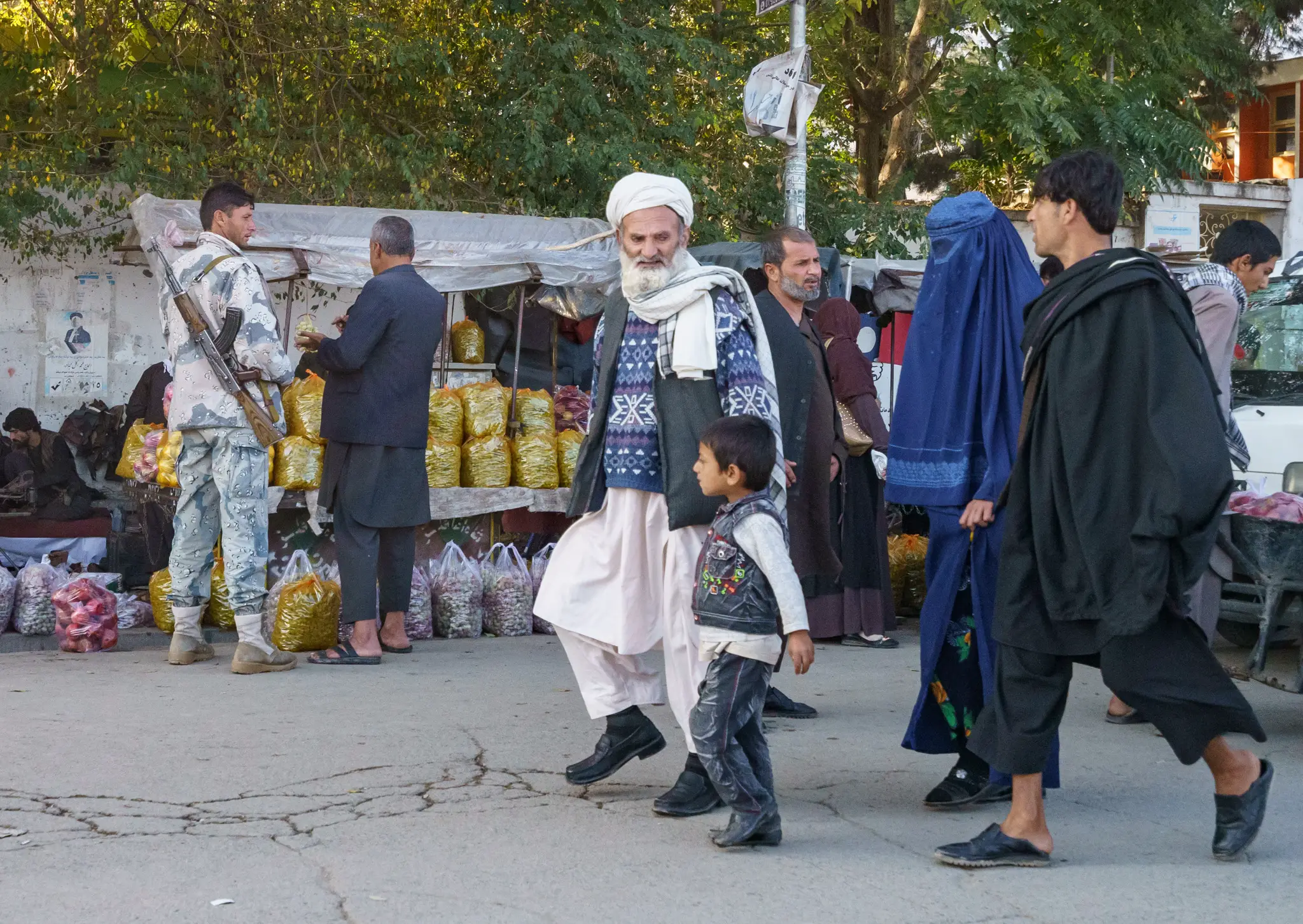
Travel Insurance for Afghanistan
Travel insurance is extremely important if you’re going to visit Afghanistan. Unfortunately, finding travel insurance that will cover Afghanistan is difficult. While I normally use World Nomads when travelling, they don’t cover Afghanistan (understandably).
I’ve been searching for an insurance provider to recommend to my readers, but I haven’t found the ideal one yet. Check out this thread for some discussion on travel insurance in Afghanistan.
Money in Afghanistan
Afghanistan’s official currency is the Afghani (AFN).
The current exchange rate is $1 = 76 Afghani as of March 2020. Check out XE.com for the latest rates.
US dollars are widely accepted in Afghanistan, and you’ll be able to find money changers all over the place. Money changers usually offer very fair rates to change USD to AFN, although be sure to bring crisp US bills.
Credit cards are basically useless in Afghanistan, outside of high-end hotels in Kabul. There are some ATMs in Kabul and other cities that accept foreign debit cards, but I wouldn’t count on the reliability of these things. Instead, try to bring enough USD to last your entire trip.
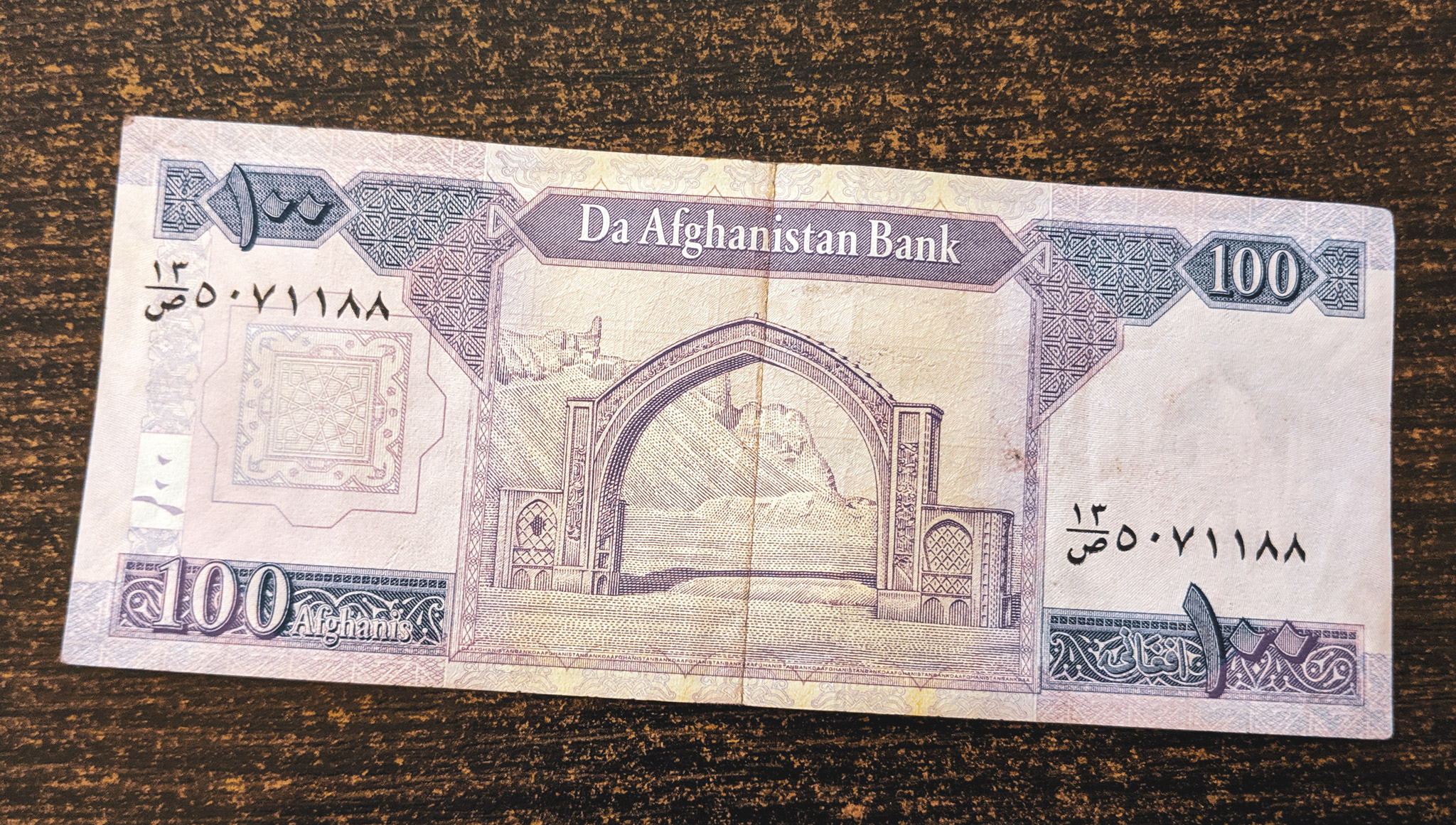
Languages of Afghanistan
Afghanistan is a multilingual country, with it’s two official languages being Dari (Afghan Farsi) and Pashto.
In certain parts of the country, you’ll also find Uzbek, Turkmen, Balochi, Pashai, Nuristani, Wakhi, and Kyrgyz being spoken.
English is hard to come by in Afghanistan, especially outside of Kabul. Learning basic Dari and carrying a phrasebook will be very helpful if you plan on travelling in Afghanistan.
People working in the tourism industry often have a basic grasp of English, especially guesthouse owners.
Travelling with a local is another good idea, as they’ll be able to help translate for you. There are quite a few locals on Couchsurfing who would be happy to take you around.
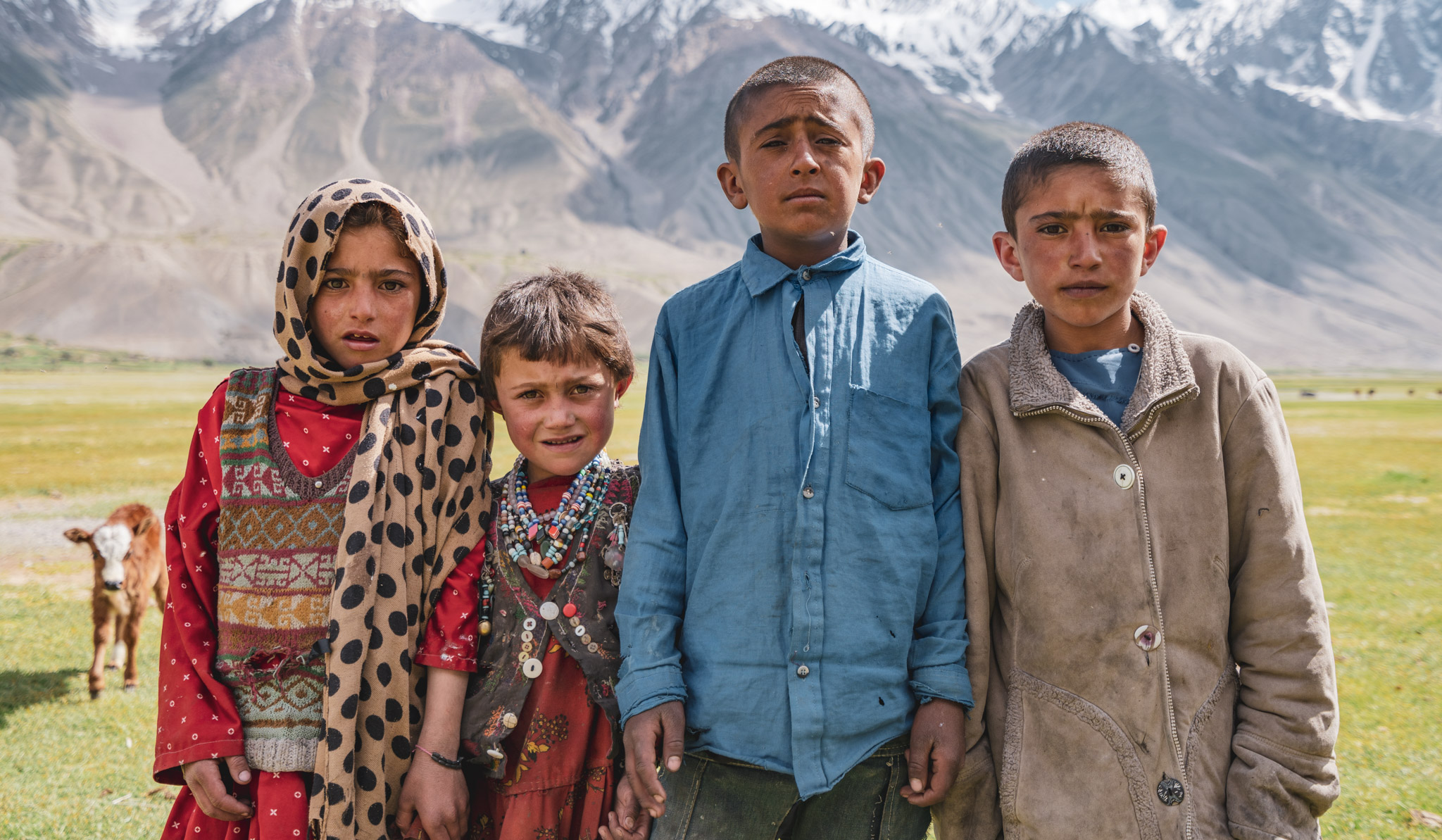
Getting to Afghanistan
Getting to Afghanistan can be a challenge. Tourist visas are hard to come by, and many land borders aren’t safe for foreigners.
Let’s go over what you need to know to get into Afghanistan:
How to get a visa for Afghanistan
All nationalities need a visa to visit Afghanistan, and getting a tourist visa is a challenge. Most Afghan embassies don’t want to issue tourist visas due to the security risks for travellers in Afghanistan.
If you are planning on visiting Afghanistan with a licensed tour operator, they’ll be able to provide you with an invitation letter. With an invitation letter, the Afghan embassy in your home country shouldn’t have any problem issuing your visa.
Things get complicated if you want to visit independently. Tour operators won’t issue an invitation letter if you aren’t travelling with them (understandable).
There are a couple of Afghan embassies that will issue tourist visas without an invitation letter. Currently, they are Khorog, Islamabad, Bishkek, Almaty. Requirements are constantly changing, and this list is only based on the latest information I have available.
I’ve had success in getting Afghan tourist visas in both Islamabad and Bishkek without a letter of invitation.
Afghan tourist visas are always valid for 30-days and are single-entry. They are valid for a 3-month period that is stated on the visa.
For more information, see my guide to getting an Afghanistan tourist visa. (Coming Soon)
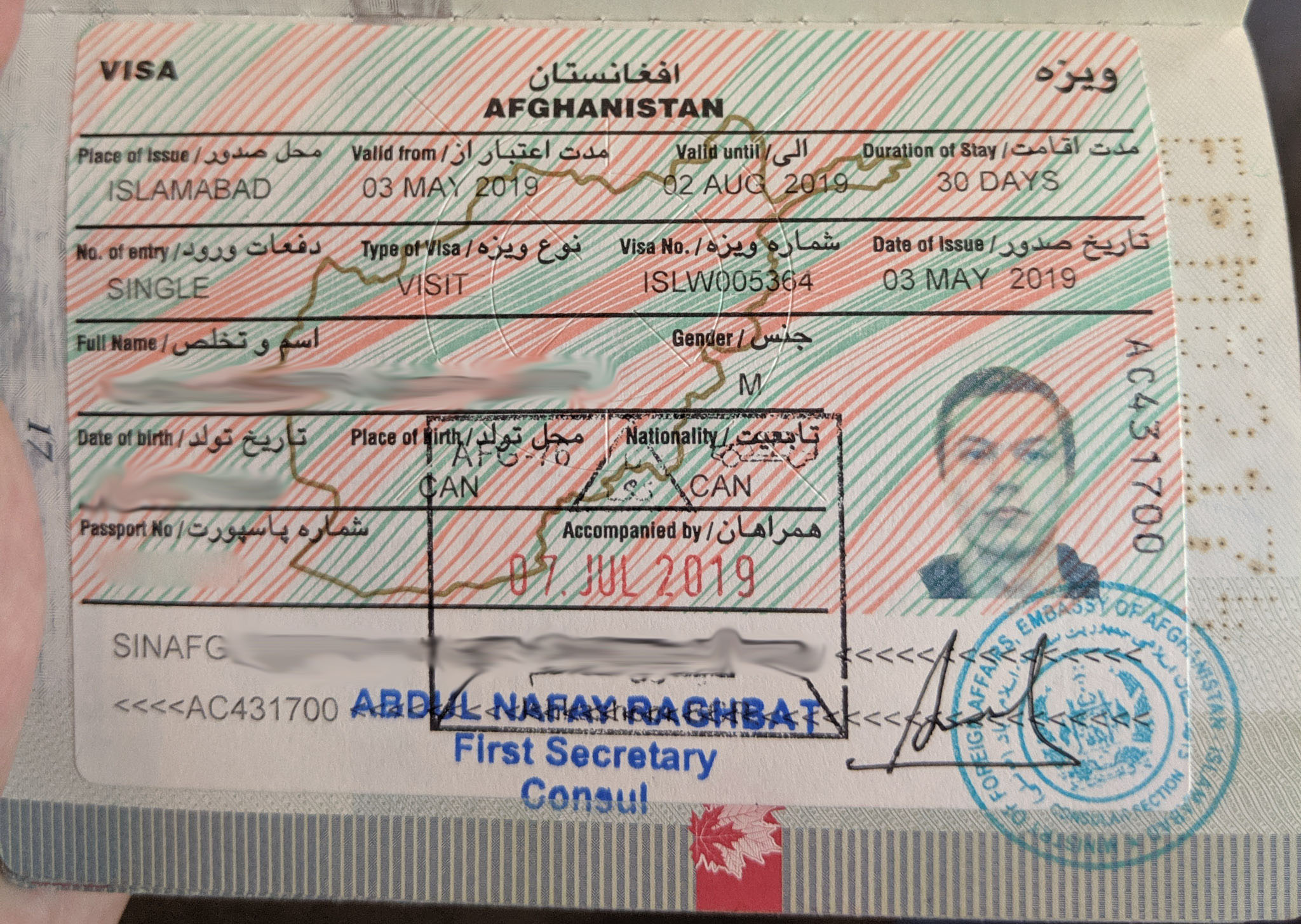
Flying into Afghanistan
Flying into Afghanistan is a good idea if you want to avoid an overland border crossing.
Afghanistan is reasonably well connected to nearby countries by air.
Kabul is the largest international airport, with daily flights from Istanbul, Dubai, Islamabad, and Delhi. There are also frequent flights from Tashkent, Dushanbe, Tehran, Jeddah, and Ankara.
Mazar-e-Sharif has flights to Istanbul, Delhi, and Moscow (once per week).
Herat has flights to Delhi, and Kandahar has flights to Delhi, Dubai, and Jeddah.
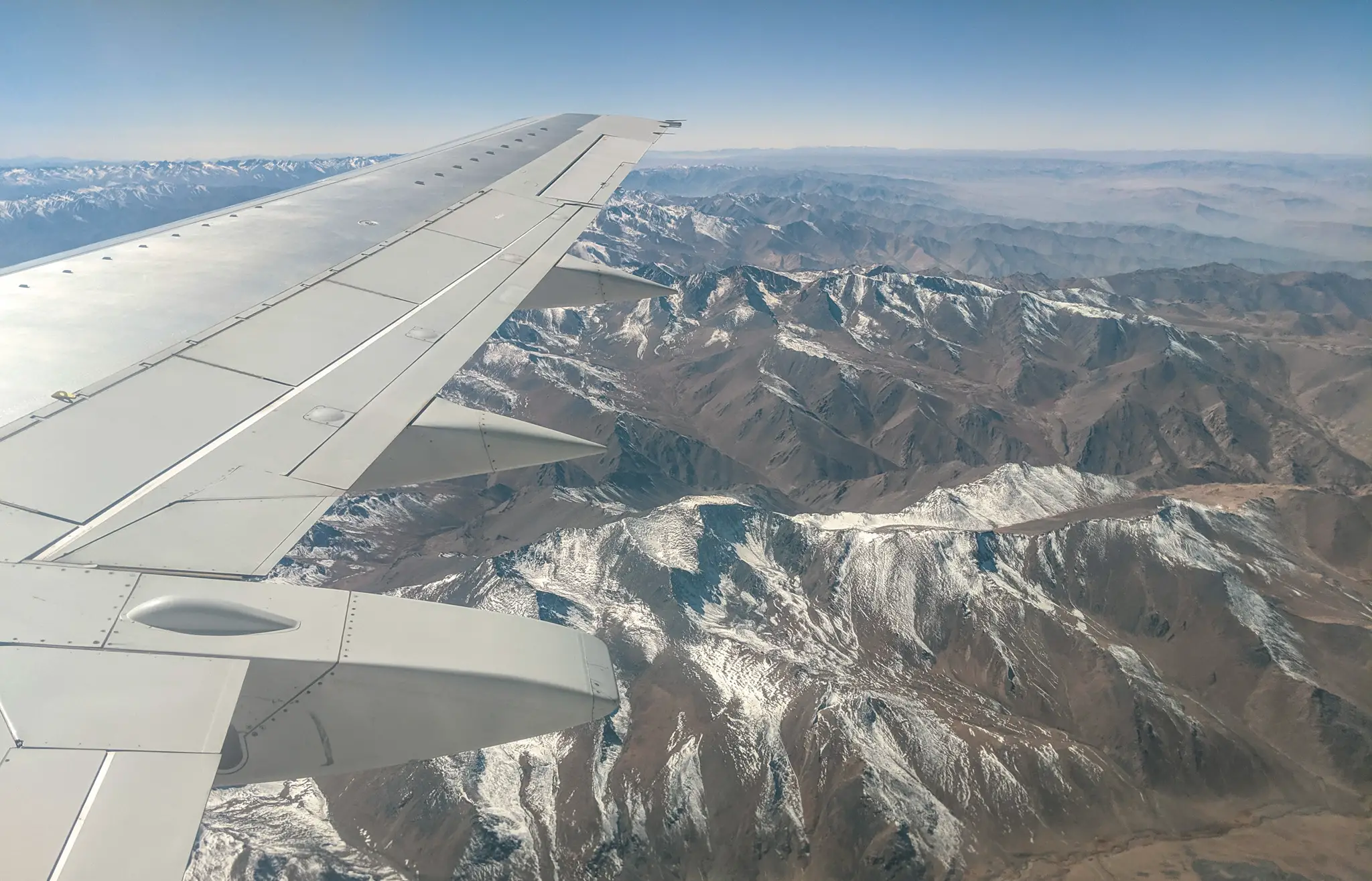
Overland into Afghanistan
There are a few different ways to travel overland into Afghanistan.
Uzbekistan to Afghanistan
The Hairatan border crossing between Termez and Mazar-e-Sharif is one of the safest Afghan border crossings.
Provided your visas are in order, this is a great way to enter Afghanistan overland.
Check out my guide to the Hairatan border crossing for more info.
Tajikistan to Afghanistan
Crossing from Tajikistan to the Afghan Wakhan Corridor at Ishkashim is safe and straightforward.
See my Wakhan Corridor guide for more info on this border crossing.
There is also a border crossing between Southern Tajikistan and Kunduz, but this border is not safe right now.
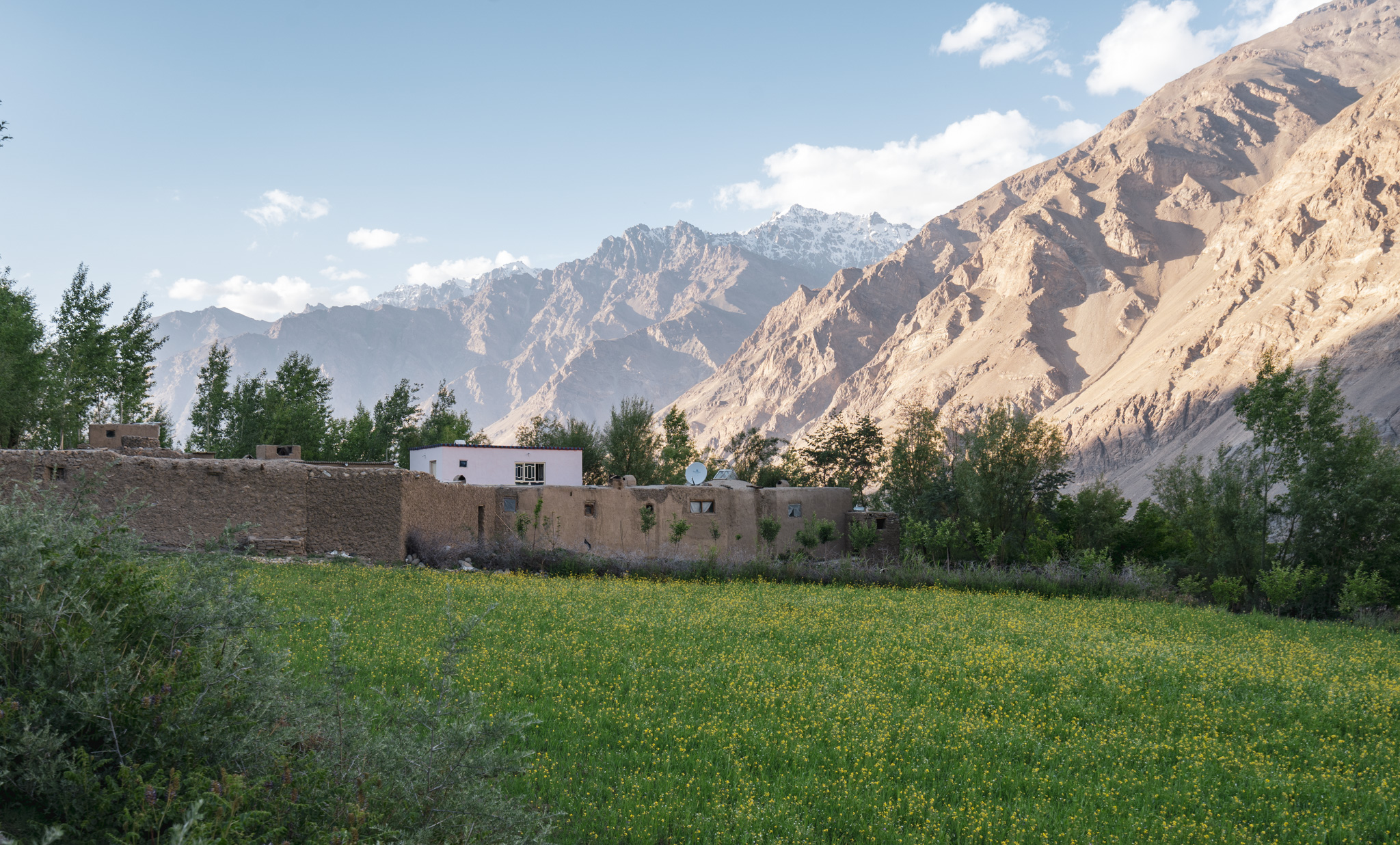
Pakistan to Afghanistan
The Khyber Pass connecting Peshawar and Jalalabad is one of the most famous border crossings in the world.
Foreigners have successfully crossed this border, but it’s not recommended.
Here’s a report from someone who attempted to cross the Khyber Pass in 2018.
Iran to Afghanistan
It is possible to travel between Mashhad and Herat safely. After entering Afghanistan, a shared taxi should cost about 250 Afghani from the border to Herat.
Turkmenistan to Afghanistan
The border between Merv and Herat is reportedly open, although not so easy to cross. You’ll need to arrange a tour to Turkmenistan if you wish to enter this way, as it’s not possible to get a transit visa for Turkmenistan in/to Afghanistan (I tried).
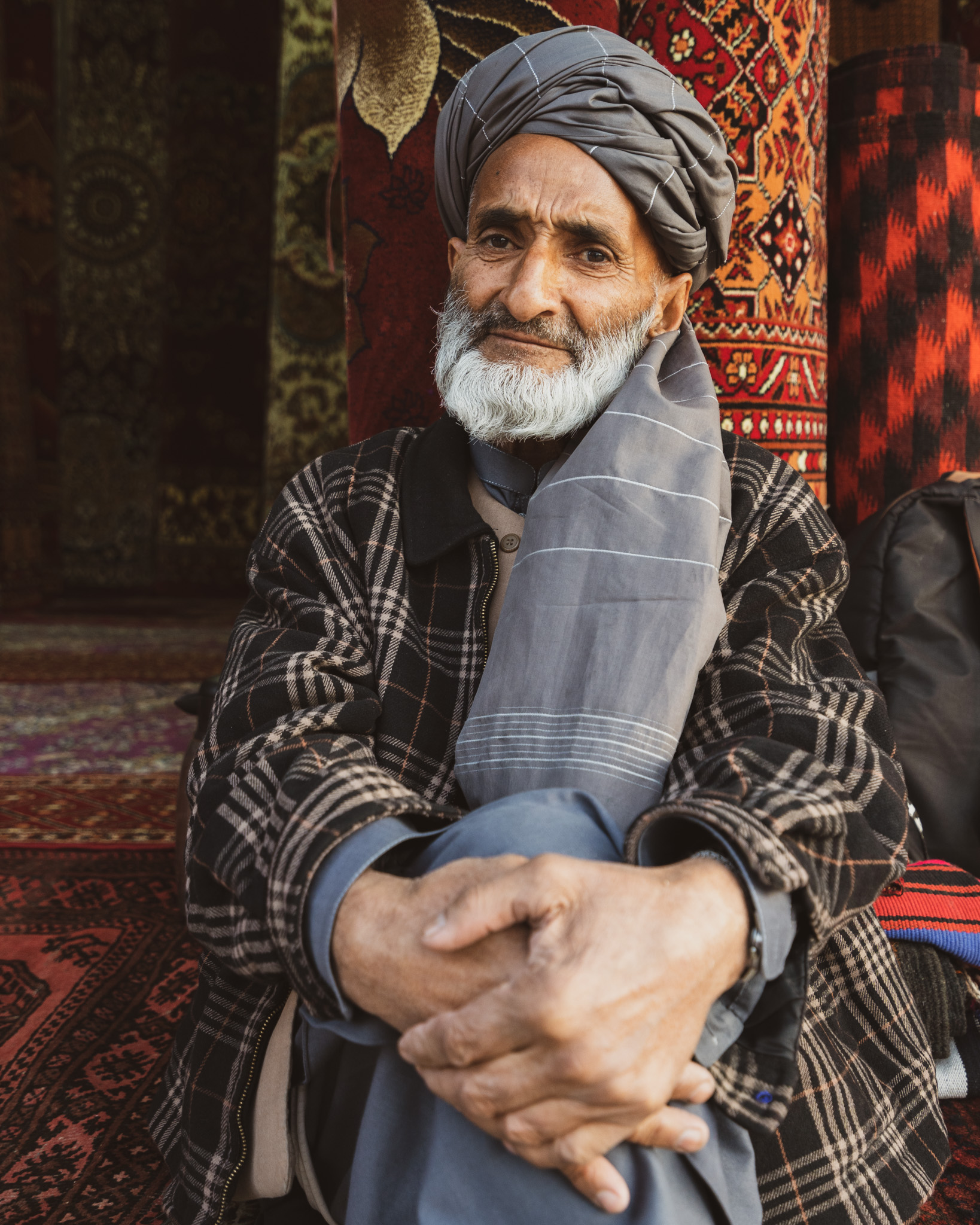
Places to visit in Afghanistan
At the moment, it’s only possible to visit certain parts of Afghanistan. Here’s everything you need to know about travelling to the safe parts of Afghanistan.
Kabul
Kabul is the heart of Afghanistan. As the nation’s capital, it’s been through a lot – over time it has hosted the British, Soviets, and most recently, the Americans.
Kabul sits at about 1,800 meters above sea level and is surrounded by the high Hindu Kush mountains on all sides.
The city is currently home to over 5 million people and is one of the world’s fastest-growing cities. Kabul is home to people from all over Afghanistan looking to work in the big city.
Things to do in Kabul
There’s of things to do in Kabul, here are some of the ones I recommend:
- Gardens of Babur – Laid out by the Mugal ruler Babur sometime in the 16th century, these beautiful gardens are the perfect way to escape the crowded streets of Kabul for some relaxation time. The entrance fee is 250 Afghani for foreigners.
- Kart-e-Sakhi – A beautiful Shia shrine and mosque that is full of locals in the afternoons (especially on Fridays).
- Shah-e-Doh Mosque – Another beautiful mosque in Kabul. Unfortunately, it was closed for renovations when I was in the city.
- Darul Aman Palace – King Amanullah’s Palace. It was destroyed by the Taliban but has recently been restored to its former glory.
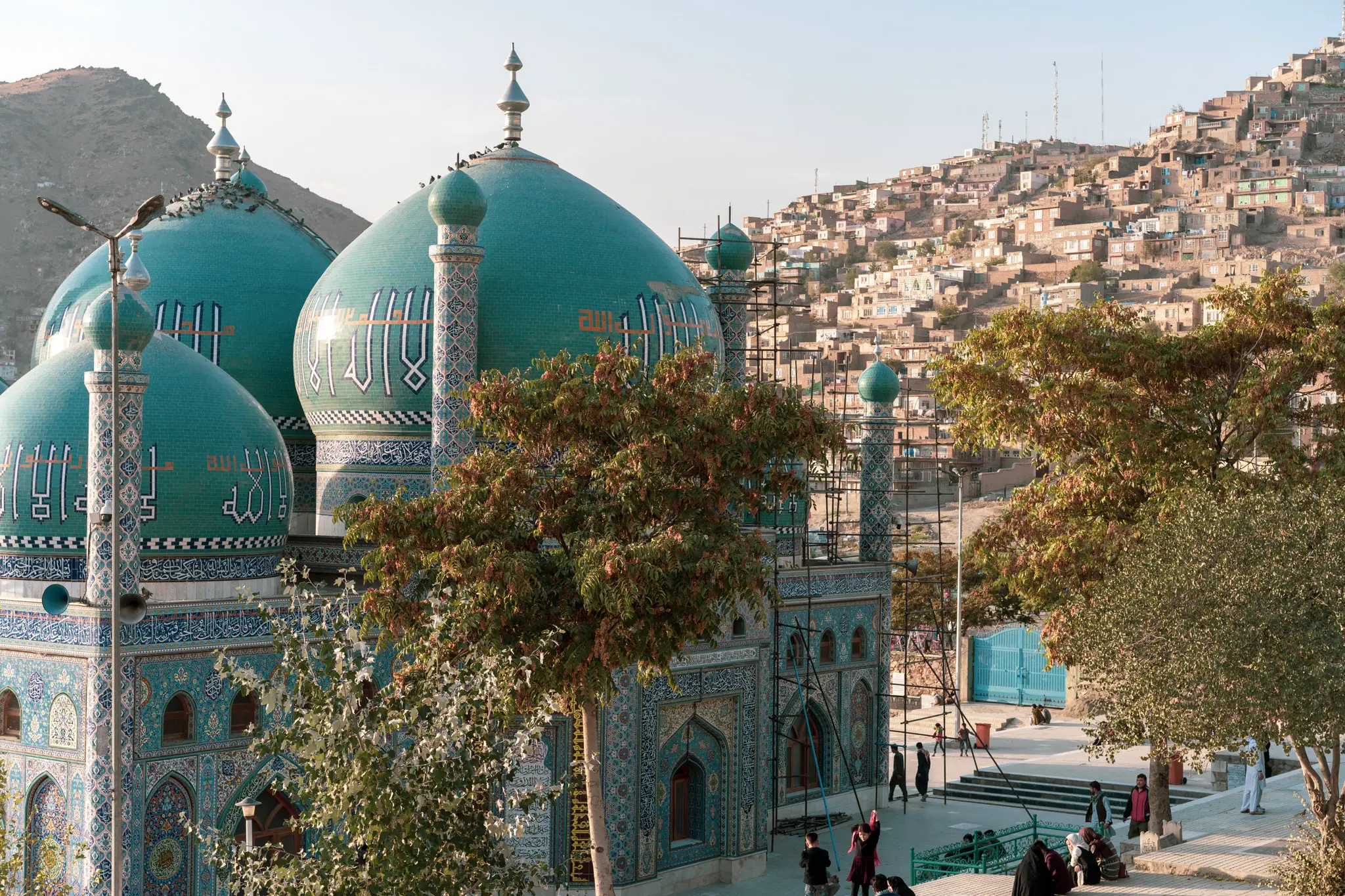
Where to stay in Kabul
- Salsal Guesthouse – A decent budget option in the center of town. No single rooms, but a double with a shared bathroom should cost 1000 Afghani. Not particularly clean.
Getting to Kabul
There are daily flights to Kabul from Mazar-e-Sharif, Herat, and Kandahar. These will typically cost about $100 one-way and can be booked on fairly short notice.
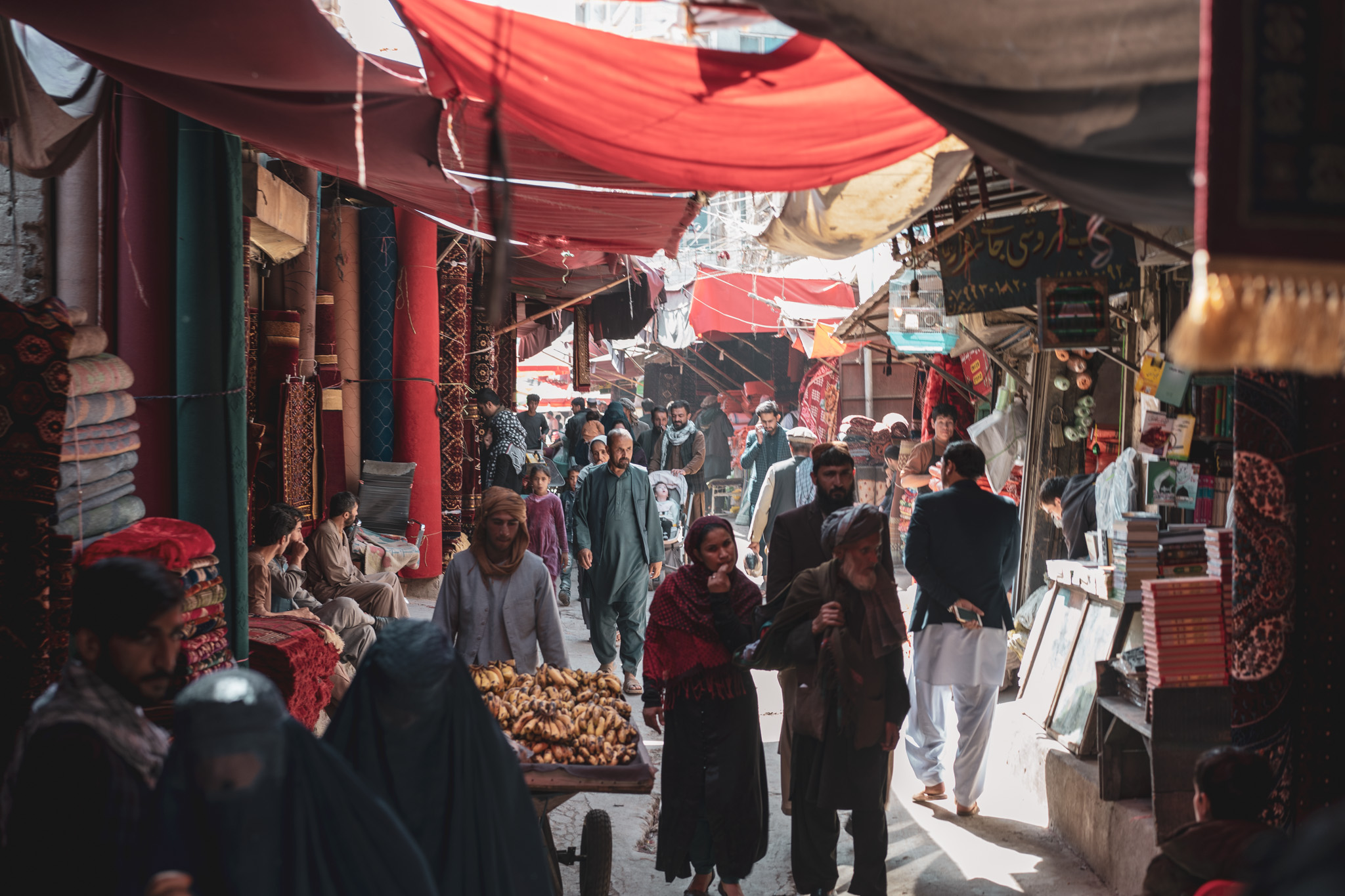
Mazar-e-Sharif
Located in Northern Afghanistan near the border with Uzbekistan, Mazar-e-Sharif is Afghanistan’s fourth-largest city and a must-visit place if you’re planning on travelling to mainland Afghanistan.
Mazar-e-Sharif is most famous for its incredible Shrine of Hazrat Ali (or Blue Mosque). I ended up visiting the mosque on three different occasions, and I’d say it’s one of the most beautiful buildings I’ve ever seen.
Things to do in Mazar-e-Sharif
Here’s what I recommend doing if you make it to Mazar-e-Sharif:
- Shrine of Hazrat Ali – One of the most stunning buildings in the world. Visit in the late afternoon for the best lighting. Entry is free.
- Day trip to Old Balkh – Balkh was the former capital of the Bactrian Kingdom and has existed since as early as 500BC. Alexander the Great, Genghis Khan, Timur, and Marco Polo all passed through this city that nowadays isn’t much more than a large ring of dirt. It’s fairly simple to visit Old Balkh as a day trip from Mazar-e-Sharif. However, the security situation in Balkh is unstable, so get in touch with some locals to find out the latest news before you go.
- Day trip to Samangan – Another awesome day trip, Samangan was once a Buddhist kingdom and is filled with ancient Stupas and other Buddhist relics.
- Roam the bazaars – The bazaars surrounding the Shrine of Hazrat Ali are full of life, and a great place to pick up some local Afghan clothes to help you blend in.
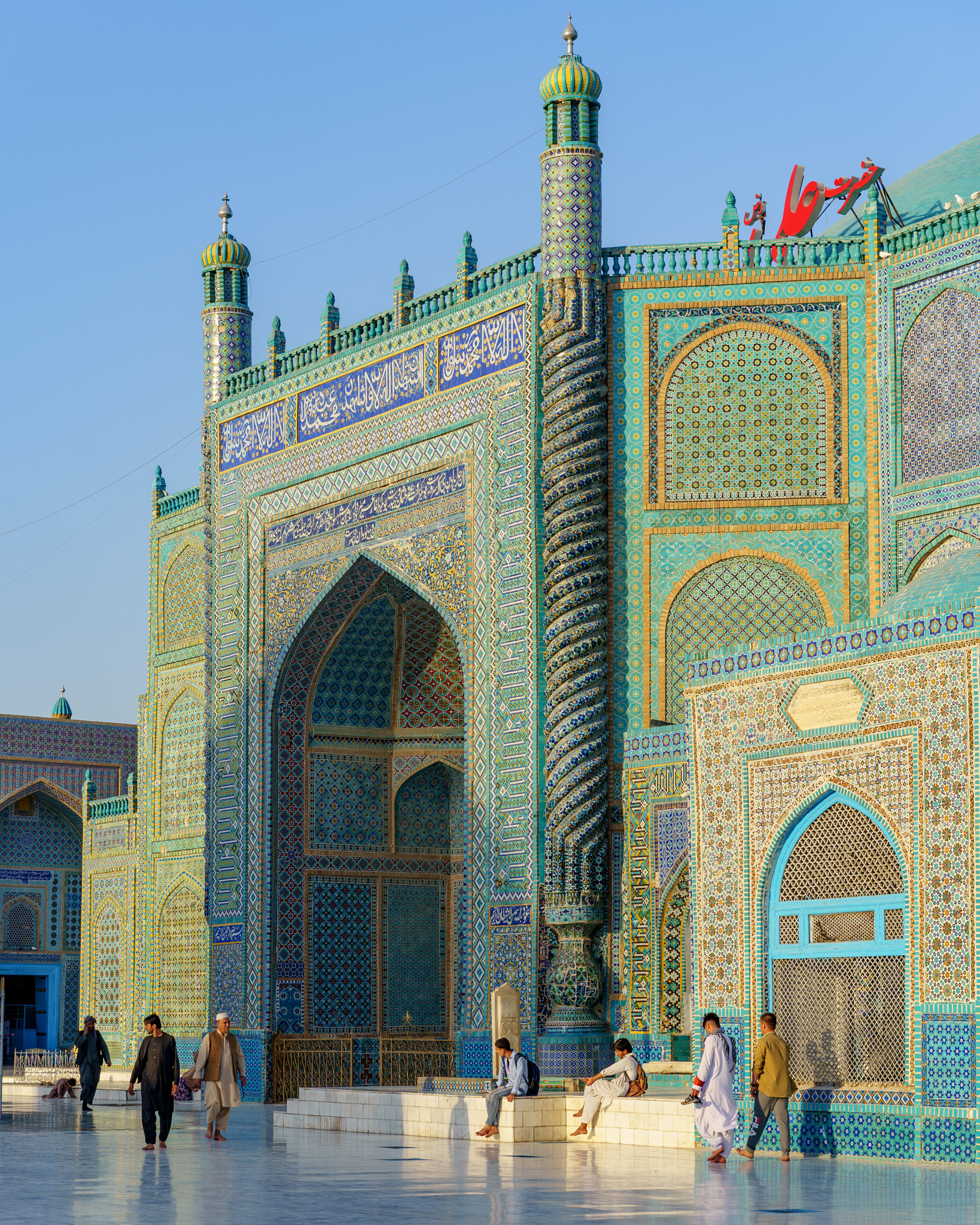
Where to stay in Mazar-e-Sharif
I had a bit of trouble finding a budget place to stay in Mazar-e-Sharif. Barg-e-Sabs was mentioned online as the best budget option, but when I managed to find it there were a bunch of random people hanging out in the “lobby” and it didn’t seem as though it was operating as an official hotel anymore (no staff were there).
I checked out a few other places, so here’s what I found:
- Karwan Balk Guesthouse – This is where I ended up staying. $25 a night for a nice single room on the 7th floor with a great view of the city and including breakfast. The staff were very friendly although didn’t speak any English.
- Barat Hotel – Right next to the Blue Mosque, they wanted $40 a night for a single room and wouldn’t budge any lower. A good option if you want to stay in the center of town.
There are some great people on Couchsurfing in Mazar-e-Sharif, so be sure to see if you can find anyone to host you.
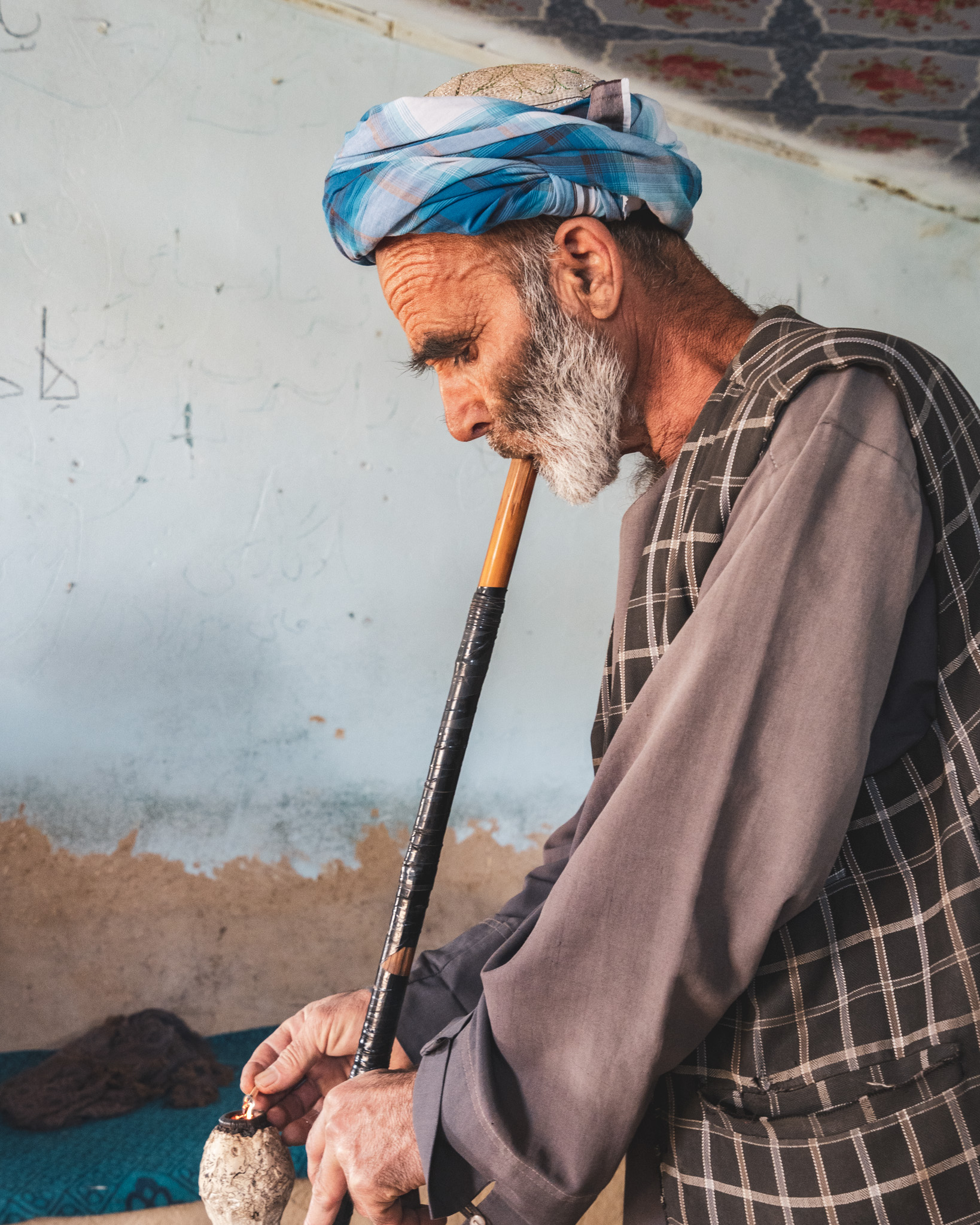
Getting to Mazar-e-Sharif
The easiest way to get to Mazar-e-Sharif is to use the Hairatan border crossing from Uzbekistan.
There are also daily flights between Kabul and Mazar-e-Sharif.
Overland travel between Kabul and Mazar-e-Sharif via the Salang Pass is not advised. The security situation along this road changes rapidly, and even if it was safe 24 hours ago it could be under Taliban control now.
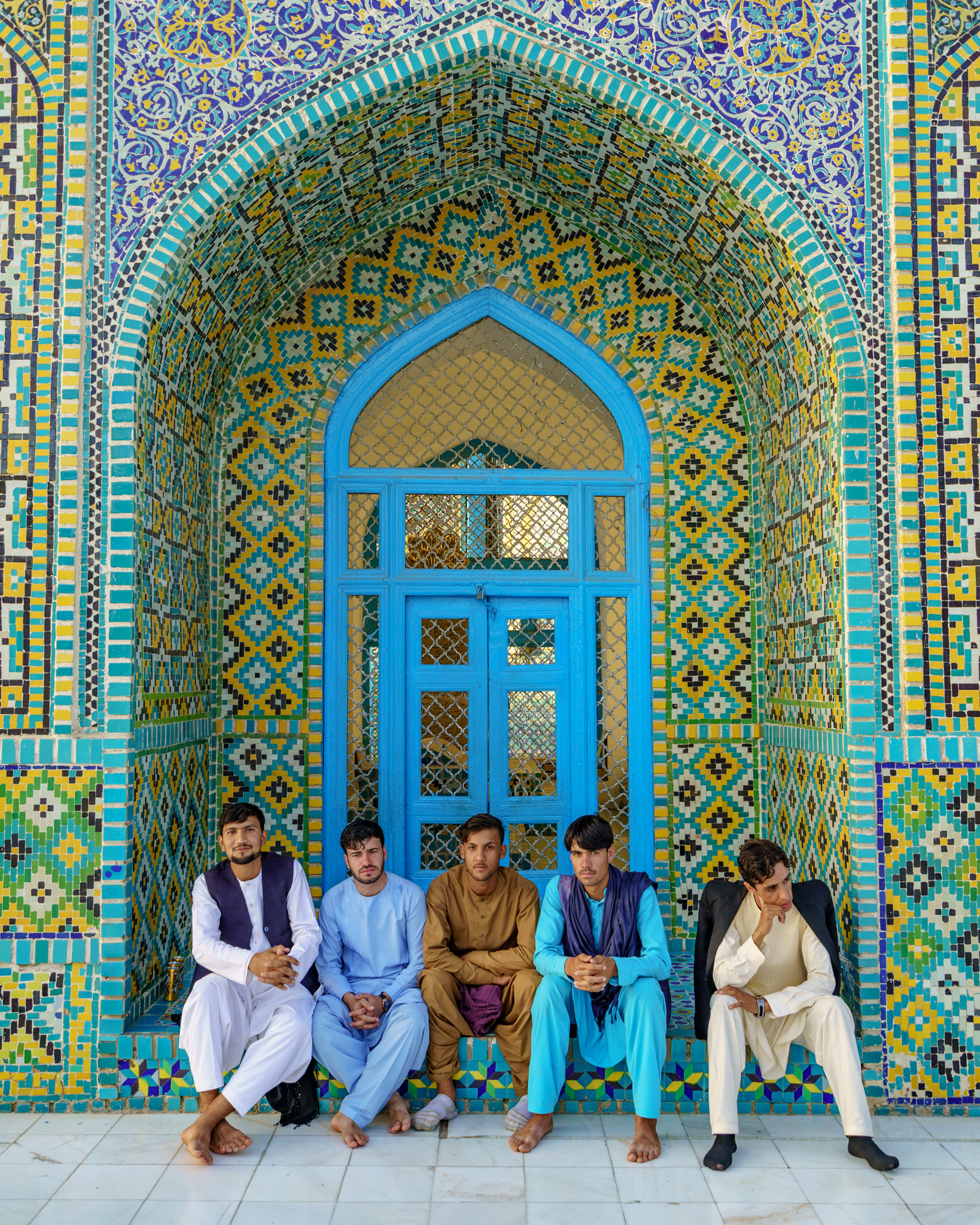
Herat
Herat another major city in Afghanistan located near the Iranian border. It’s a historically Persian city and has a very unique Persian-Afghan culture blend.
Wandering around Herat’s Old City feels like travelling back in time, and it’s Friday Mosque will leave even the most well-travelled in awe.
Things to do in Herat
- The Great Mosque of Herat – Another one of Afghanistan’s stunning mosques. This building is absolutely beautiful, and you could spend hours roaming around and watching worshippers pray.
- Musalla Complex – Once upon a time, this was the largest mosque in Herat. unfortunately, it was destroyed by the British in 1885 and today only five massive minarets remain.
- Herat Citadel – A massive fortress that was recently restored. It’s a great place to spend an afternoon wandering around.
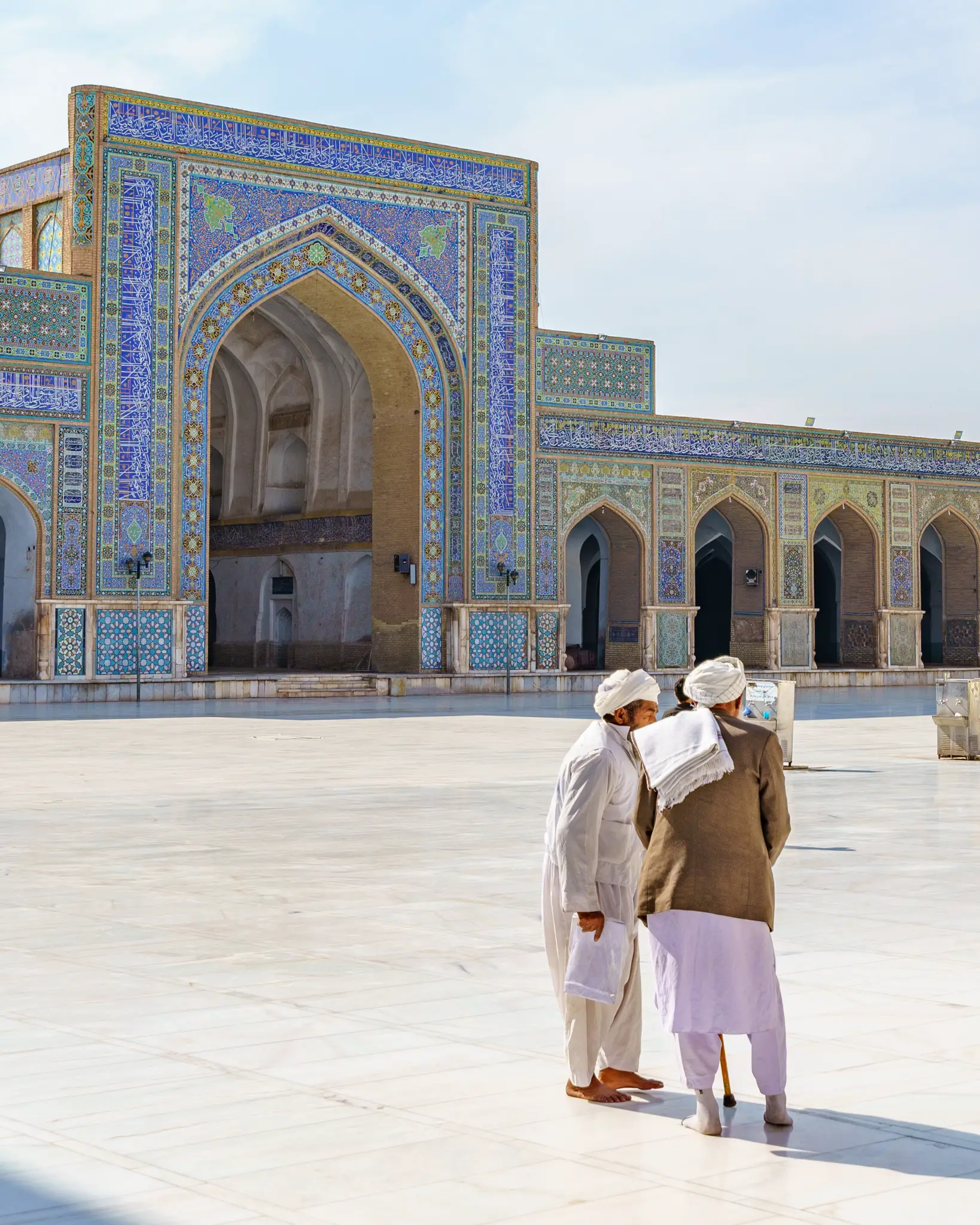
Where to stay in Herat
You’ve got a few different options for places to stay in Herat.
- Hotel Darya – This is where I ended up staying. $20 a night for a basic single room with a private bathroom. It is located right near the Grand Mosque and the staff were friendly.
- Marco Polo Hotel – A slightly more expensive option, rooms here will run you $40 to $50 a night for a single.
Getting to Herat
The only way to safely get to Herat from other parts of Afghanistan is by air. There are daily flights from Kabul on Kam Air for around $90.
The only alternative way to get to Herat is from Mashad, Iran – although you will still need to fly to get to anywhere else in Afghanistan.
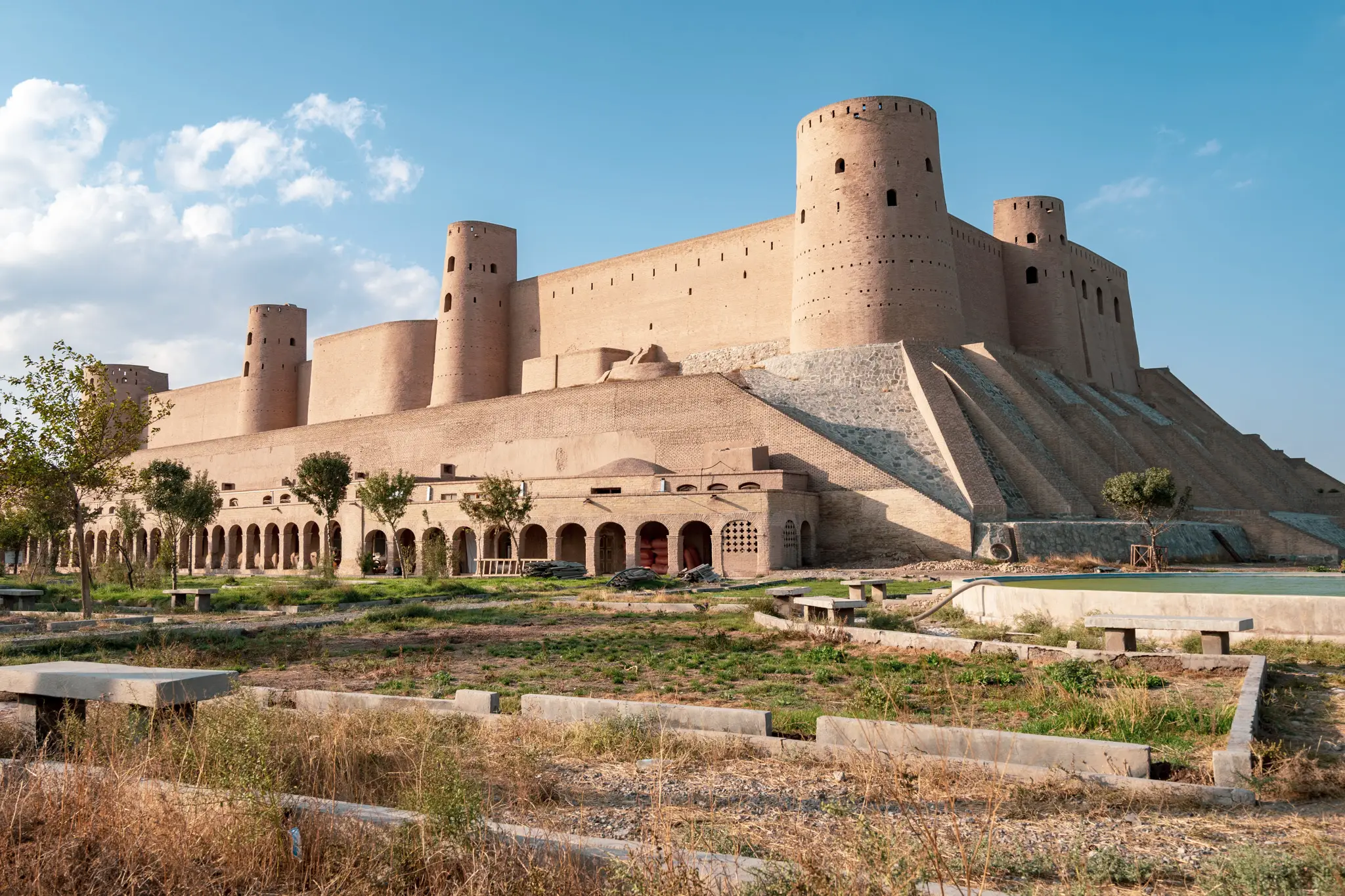
Bamiyan
Bamiyan is one of my favourite places I’ve ever been – it’s a peaceful oasis located high in Afghanistan’s Hindu Kush mountains.
I could have spent weeks exploring this place, there’s just so many picturesque villages and valleys filled with warm, hospitable people. I hope to be back soon to see more.
When you are in Bamiyan, you’ll need to purchase a 300 Afghani entrance ticket which will allow you to enter most sights (other than Band-e-Amir which is a separate ticket). The main ticket can be purchased near the base of the largest Buddha.
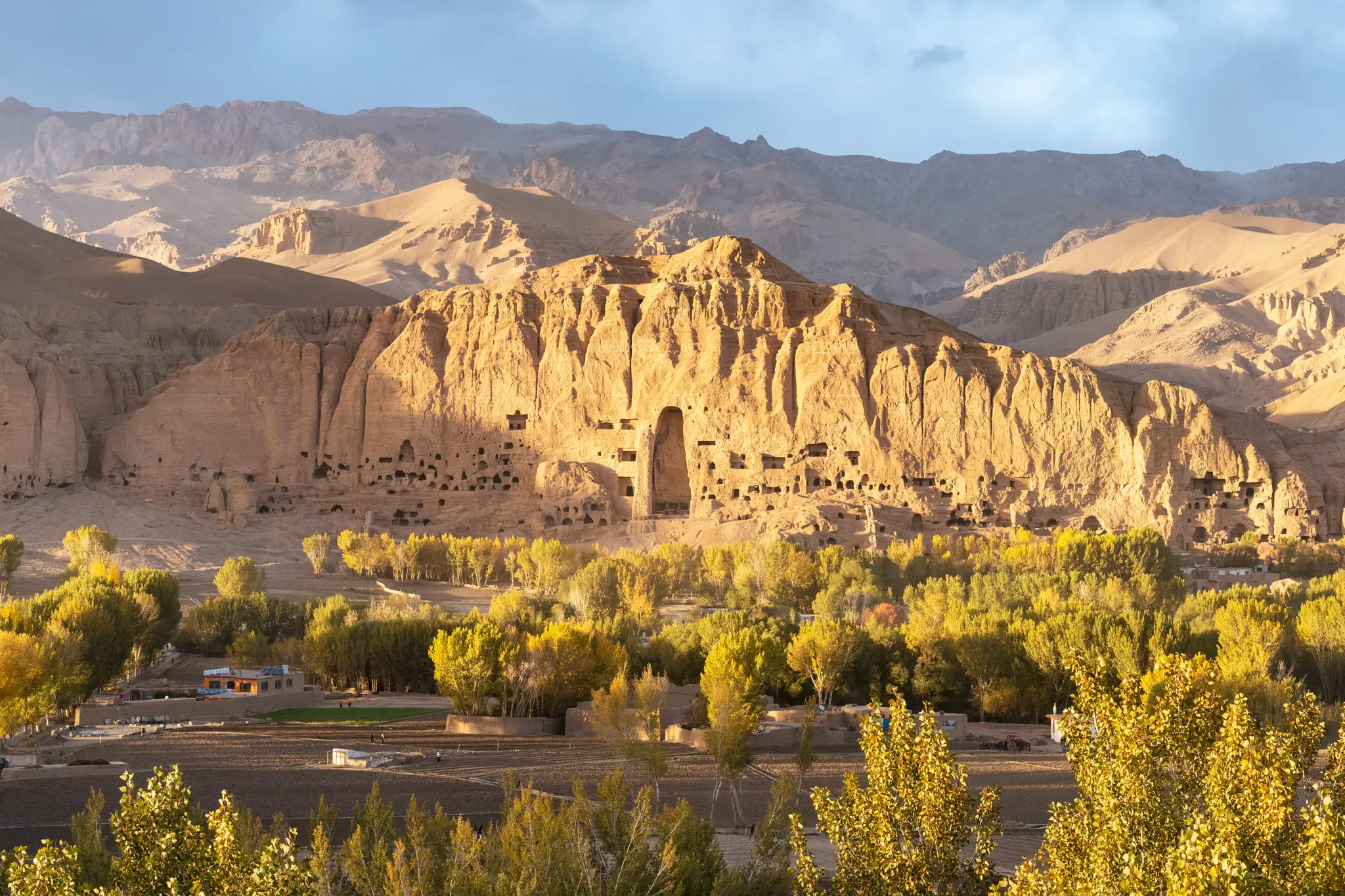
Things to do in Bamiyan
- Band-e-Amir National Park – Band-e-Amir is Afghanistan’s crown jewel. It’s located at 3,000 meters above sea level about 1.5 hours outside of Bamiyan Town. Band-e-Amir is home to six gorgeous blue lakes and is perfect for photography. The entrance fee is 250 Afghani.
- Buddhas of Bamiyan – Probably the most famous sight in all of Afghanistan. The Buddhas of Bamiyan were tragically destroyed by the Taliban in 2001, but the remains are still a stunning sight to see. It’s hard to miss these when you visit Bamiyan, they can be seen from all over town.
- Shahr-e Gholghola – An imposing fortress was the location of the Ghorid Bamiyan’s final battle against the Mongol hordes of Genghis Khan. Located in the center of Bamiyan town, you’ll be able to see it rising above as soon as you arrive.
- Shahr-e Zohak – This is another fortress, but it is located near the entrance to the Bamiyan Valley. It’s perched on cliffs high above the valley and is a great half-day trip from town.
- Dara-e Ajdahar – Also known as the Dragon Valley. Once upon a time, legend has it that Ali, the son of Prophet Mohammad, slew a dragon here. You can take a taxi here (or walk) from Bamiyan town and spend a couple of hours walking around taking in the views.
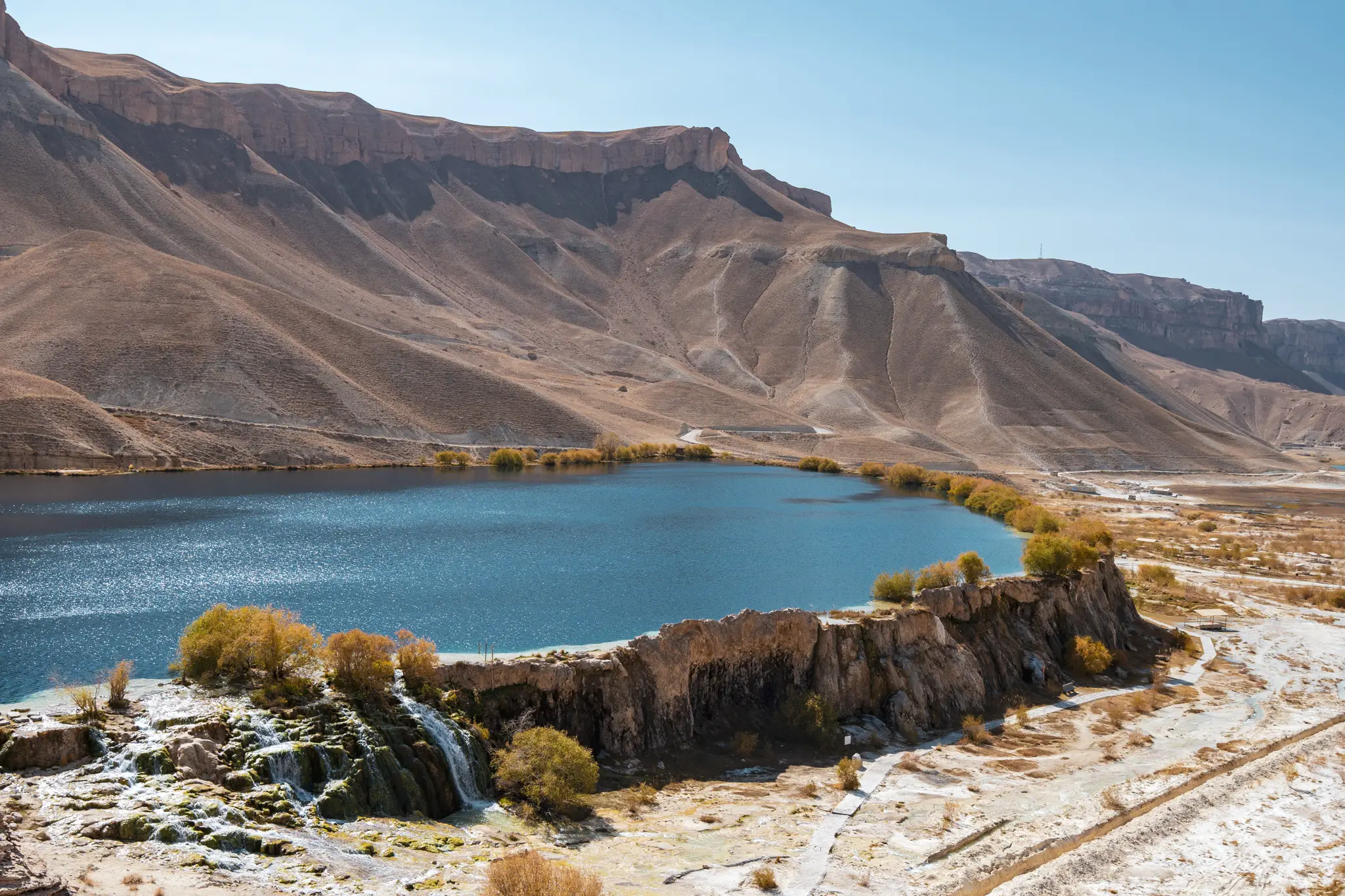
Where to stay in Bamiyan
Bamiyan has quite a few decent places to stay:
- Cheelhil Burg Hotel – This is where I stayed and I liked it! It’s located a bit far from the town center (closer to Ajdahar village), but is a nice place and is run by a friendly family. It costs 2000 Afghani per night for a double room ($26).
- Chaikhanas – These are your cheapest option. They’re scattered throughout the main bazaar and are basically just a room with cushions on the floor. They cost between 400 and 500 Afghani per night (~$6).
- Highland Hotel – A higher-end option, the Highland has a great view of the Bamiyan Valley and is run by a great guy. Prices are around $50 – 90 depending on the season and your negotiation skills.
Getting to Bamiyan
Getting to Bamiyan is a challenge because the road there passes through dangerous Taliban territory. Flying is a better option, although flights are sporadic.
To learn more about travelling in Bamiyan, check out my detailed Bamiyan Travel Guide.
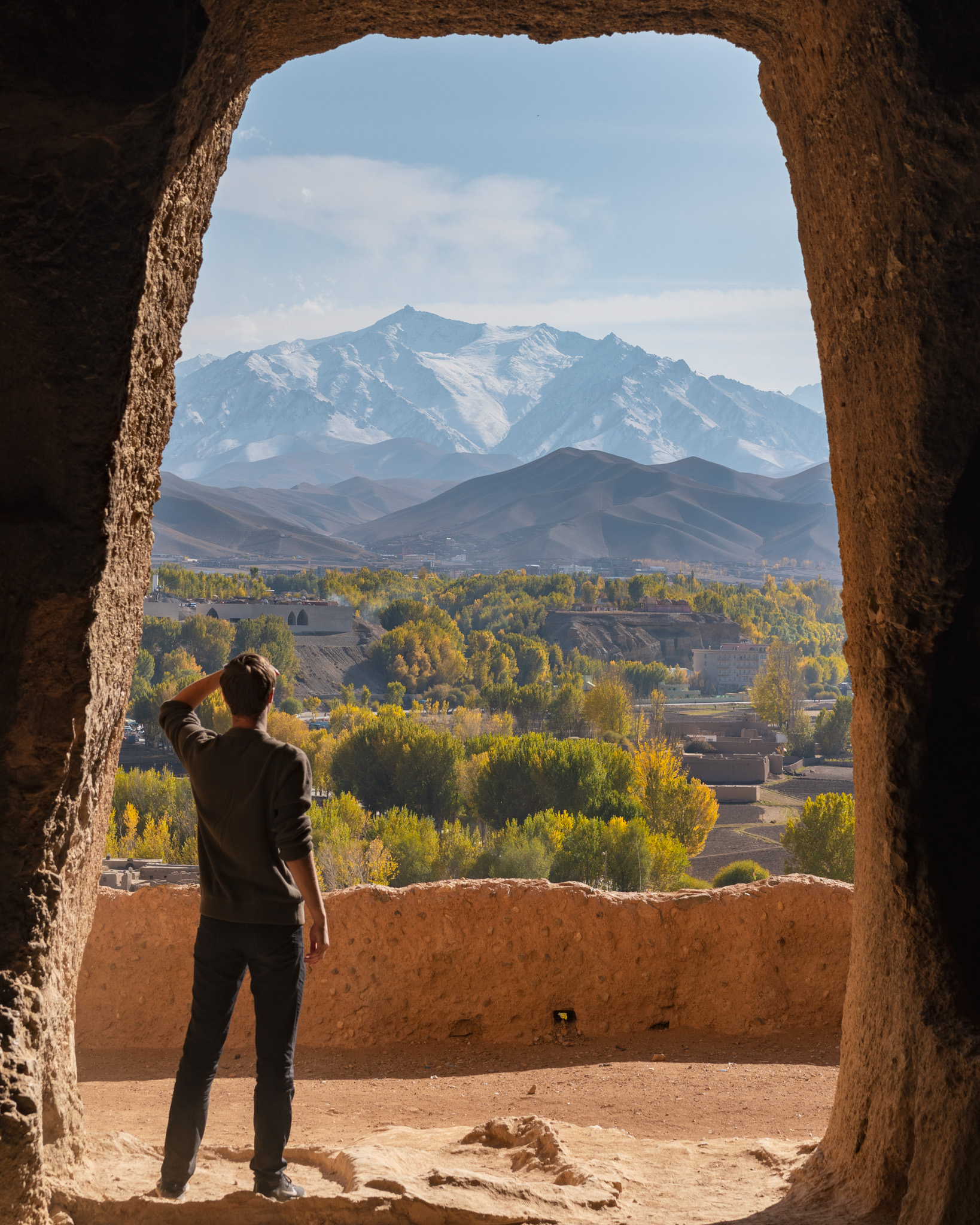
Wakhan Corridor
The Wakhan Corridor is far different from the Afghanistan that most people know. It is a remote and mountainous strip of land bordered by Tajikistan, Pakistan, and China. The Wakhan Corridor separates the Pamir and Karakorum mountains and is home to the source of the Amu Darya (Oxus).
It’s one of the safest parts of the country (only Bamiyan could be considered slightly safer) and is the perfect place for nature lovers who want to experience Afghanistan.
Things to do in the Wakhan Corridor
- Ishkashim Bazaar – If you’ve only got a bit of time then your best bet is to spend it in Ishkashim, checking out its bazaar and getting a feel for life in Afghanistan.
- Trekking – By far the most popular activity in the Wakhan Corridor is trekking, and if you’ve got a decent amount of time in the Wakhan then you definitely should go on a trek. Popular treks include the one to the Little Pamir or the one to Noshaq Base Camp.
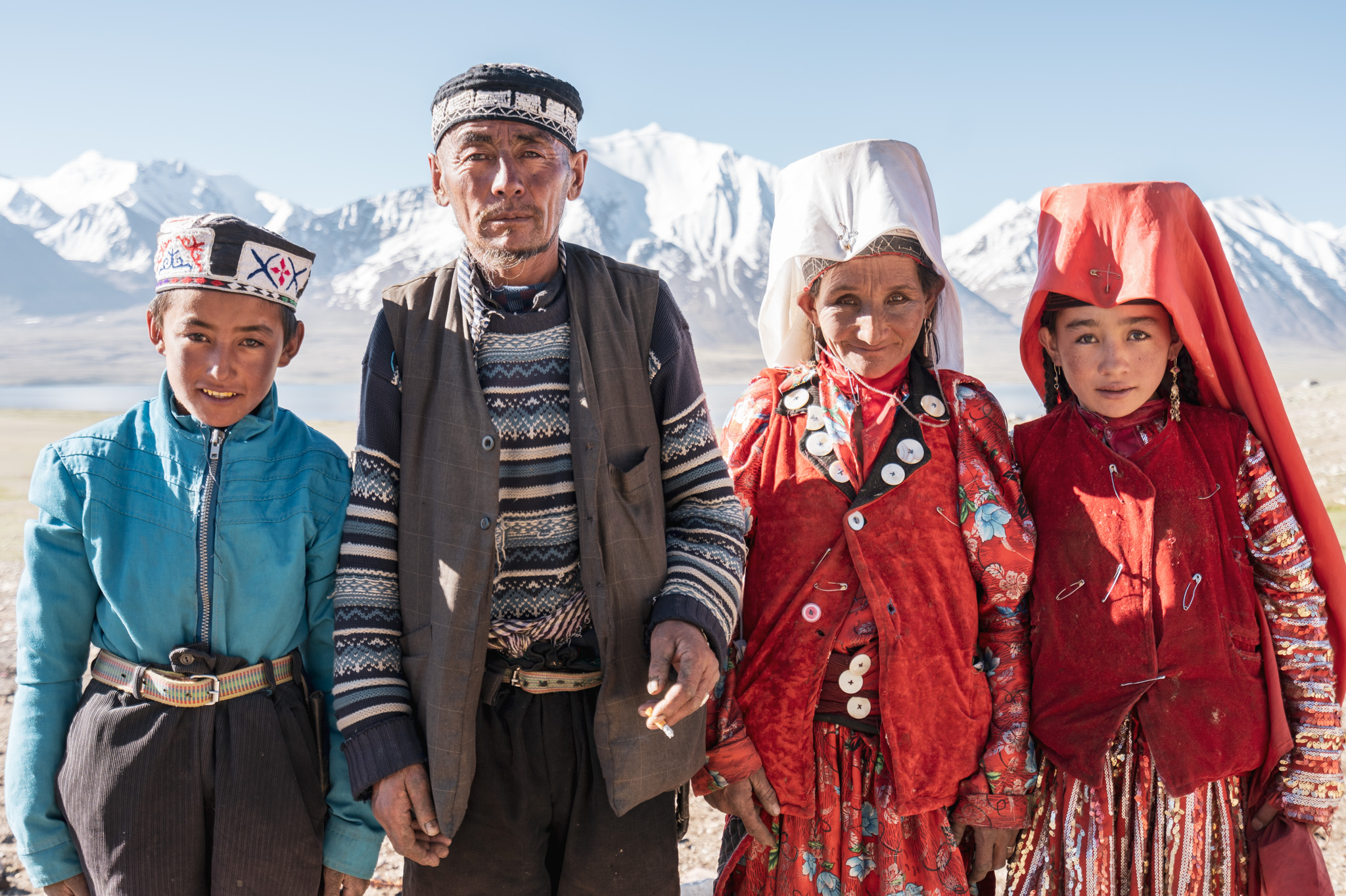
Where to stay in the Wakhan Corridor
Accommodation in Wakhi villages in the Wakhan Corridor comes in the form of basic guesthouses that are usually run by the only English speakers in town.
When trekking to the Little Pamir, you’ll be required to do a bit of camping until you reach the Kyrgyz nomads who you can stay with.
Getting to the Wakhan Corridor
Currently, the only safe way to get to the Wakhan is via Tajikistan. You’ll need to cross the border at Ishkashim, a town 3 hours south of Khorog. Be sure to have a second Tajik visa for your return trip, otherwise, you’ll be stuck.
The road connecting Ishkashim with the rest of Afghanistan goes through Taliban territory and is not safe for travel.
To learn more, check out my in-depth Wakhan Corridor travel and trekking guide.
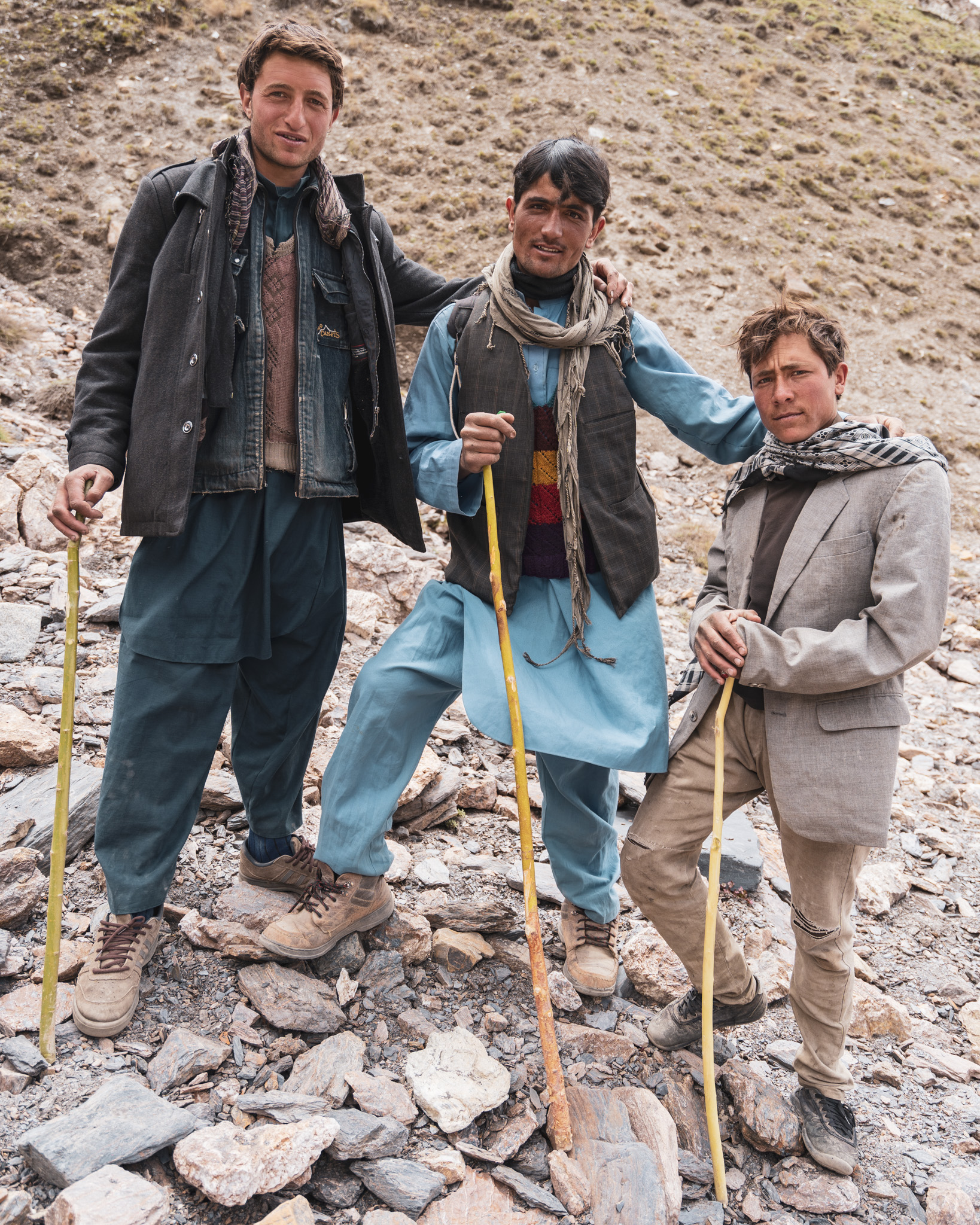
When to visit Afghanistan
The best time to visit Afghanistan depends on which part of the country you want to visit. In general, spring and autumn are the best times of the year to visit, as cooler (but not freezing) temperatures cover most of the country.
Autumn is extra beautiful, as the grasses and trees all over the country turn beautiful shades of orange and yellow.
Summertime in mainland Afghanistan is very hot – low elevation cities such as Mazar-e-Sharif and Herat can reach close to 50 degrees. I don’t advise visiting these places during the summer, as it will make your trip pretty uncomfortable. However, the Wakhan Corridor is a great summer destination due to its high altitude.
Winter covers Afghanistan in a blanket of snow, and temperatures will be very cold. I’ve seen photos from some of my Afghan friends, and the country does look beautiful at this time of year (although you better pack a decent jacket).
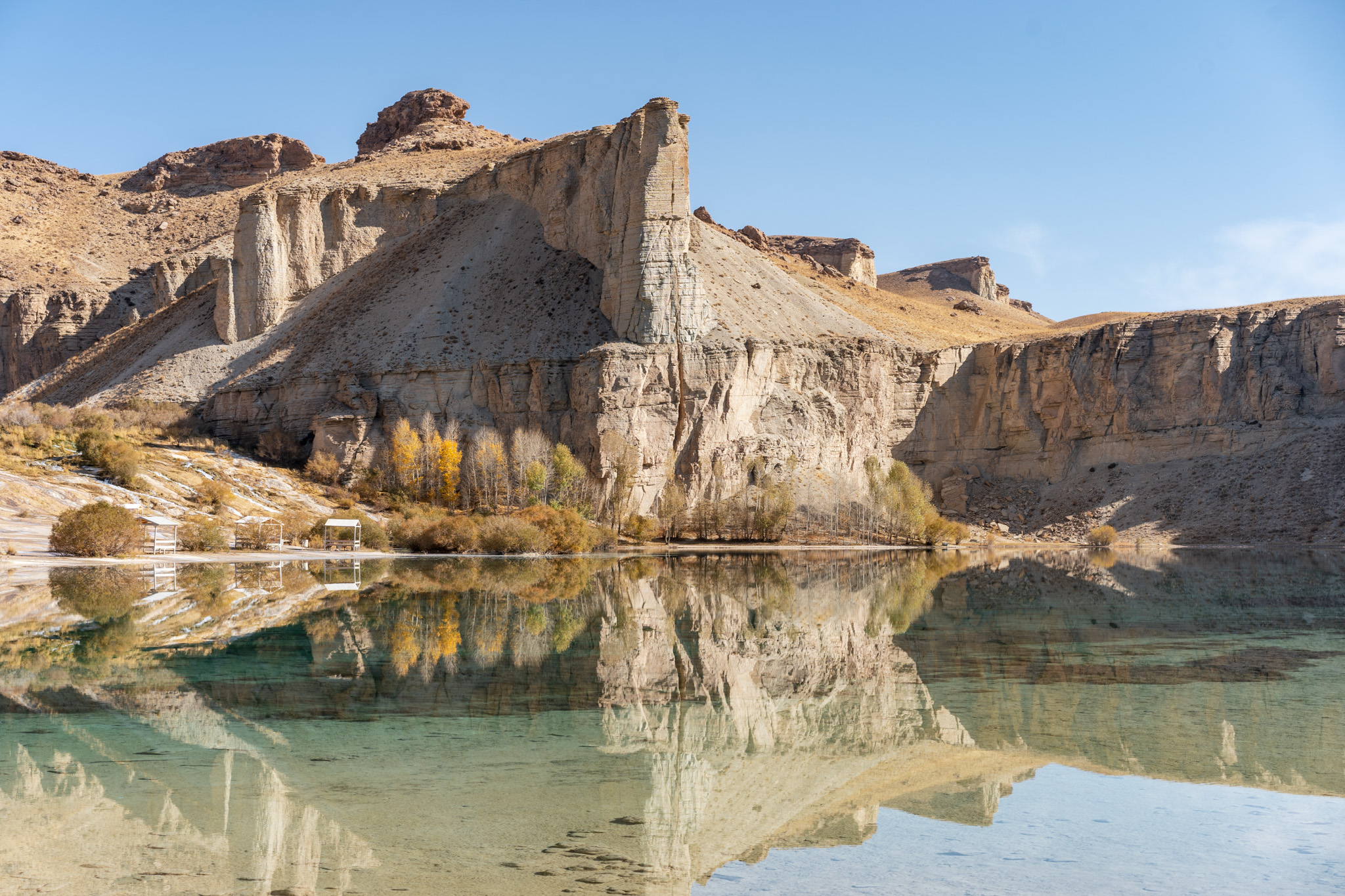
Internet in Afghanistan
Internet access in Afghanistan isn’t great.
In the mainland, you can pretty easily pick up a SIM card from one of the major telecoms with a few gigabytes of data for about 500 Afghani.
Unfortunately, I found that this internet rarely worked in Kabul due to huge amounts of people overloading the towers. Mobile data connection speeds tended to be higher in lesser-populated areas such as Bamiyan. Herat and Mazar-e-Sharif were somewhere in the middle.
There isn’t any way to buy an Afghan SIM card in the Wakhan Corridor, and there are no towers to provide you with a signal anyways. If you purchase a Tajik SIM before leaving Tajikistan, it’s possible to connect to the Tajik cell towers on the opposite side of the Wakhan Valley. See my Wakhan Corridor guide for more info on this.
WiFi is available in some cafes in Kabul, although it’s always extremely slow. In general, don’t count on doing much photo/video uploading while in Afghanistan – sending emails and browsing the web will work alright though.
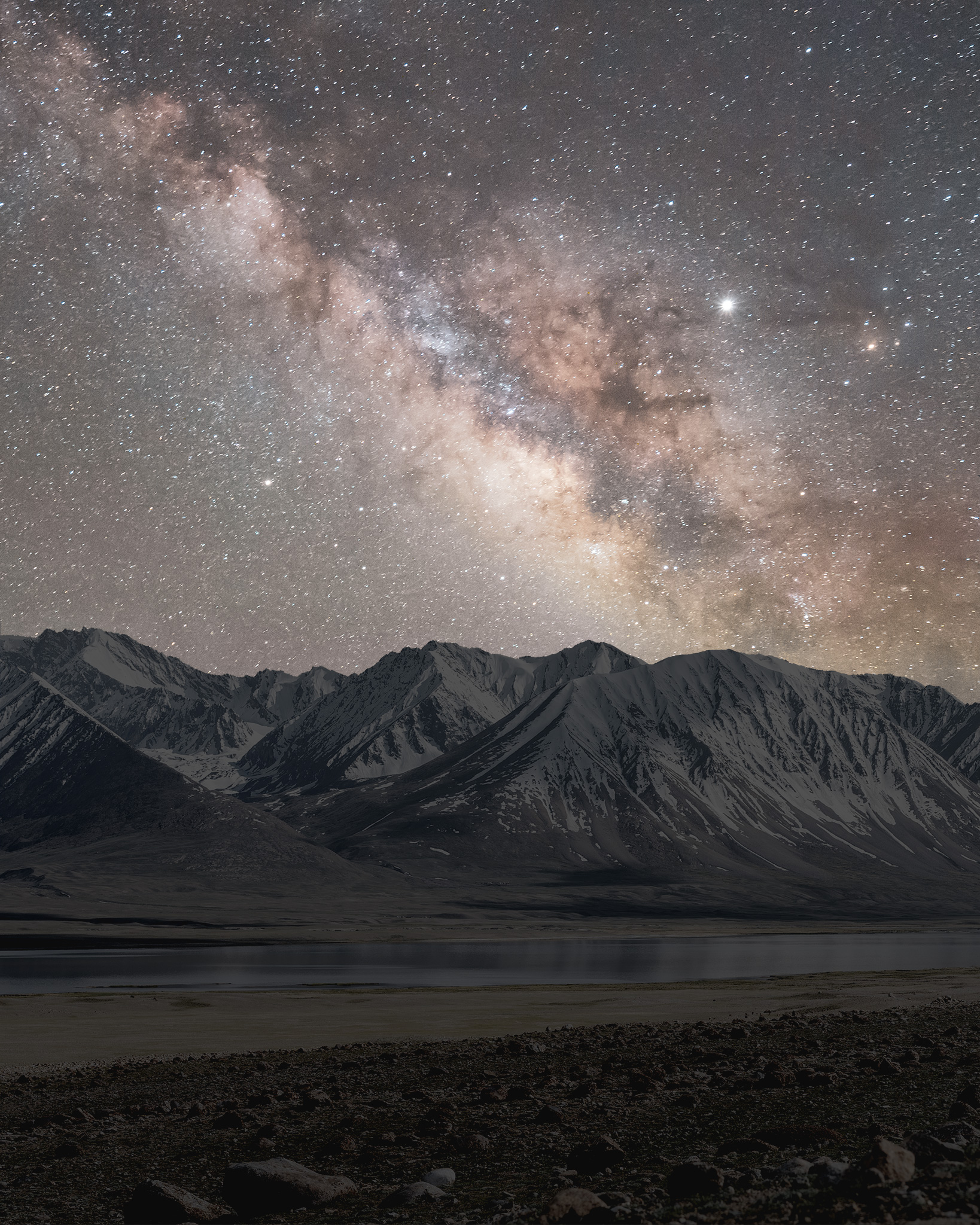
Female Travel in Afghanistan
Female travel in Afghanistan comes with its own unique set of challenges on top of the ones that men experience.
Afghanistan is still an extremely religious and conservative country (although not quite on the level of Saudi Arabia). Here are a few things you need to know:
- You should always wear a hijab – Most local women wear a full burqa, so it’s at least expected that you wear the more “moderate” hijab.
- If you’re travelling with a guy, you will be ignored – While it may seem disrespectful, Afghan men are actually attempting to show you respect by not interacting with you. This isn’t an issue when the local men are liberal and educated.
- Restaurants are segregated – Every restaurant has a family and singles section, and the singles section is filled entirely with men. You can sit in either section, but be prepared for a lot of stares if you sit in the single section.
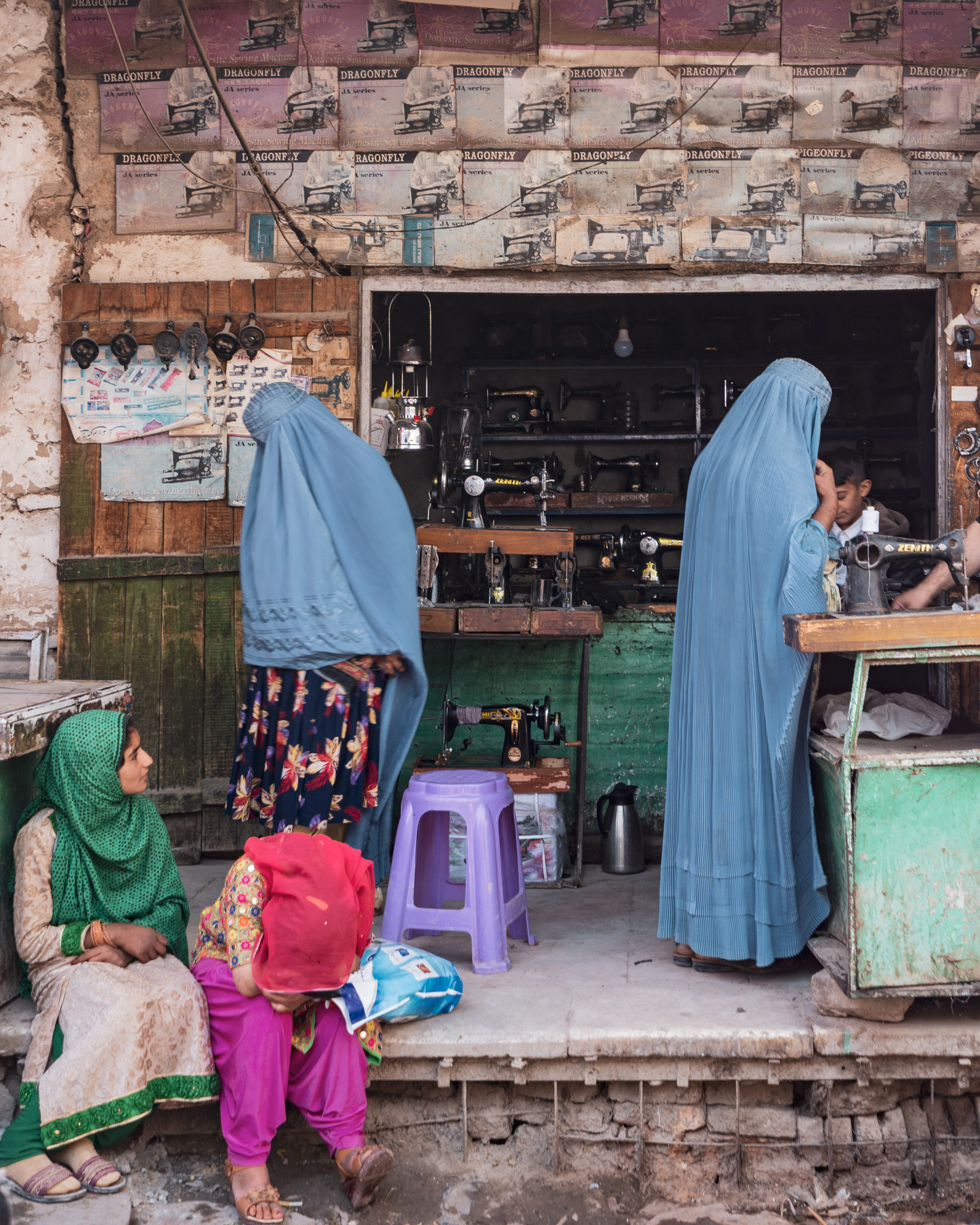
Solo Travel in Afghanistan
It’s totally possible to solo travel in Afghanistan. In fact, all five of my weeks in Afghanistan were solo (although I did go to Bamiyan with a friend from Kabul).
If you’re planning to travel solo, my best advice is to keep in touch with a family member or friend back home and always let them know what your plans for the day are (and check-in at the end of every day).
For certain things (overland travel, visiting Old Balkh), I recommend travelling with a local friend. Unless you speak Dari, it’s not a wise idea to be all alone in parts of rural Afghanistan where there is little government presence.
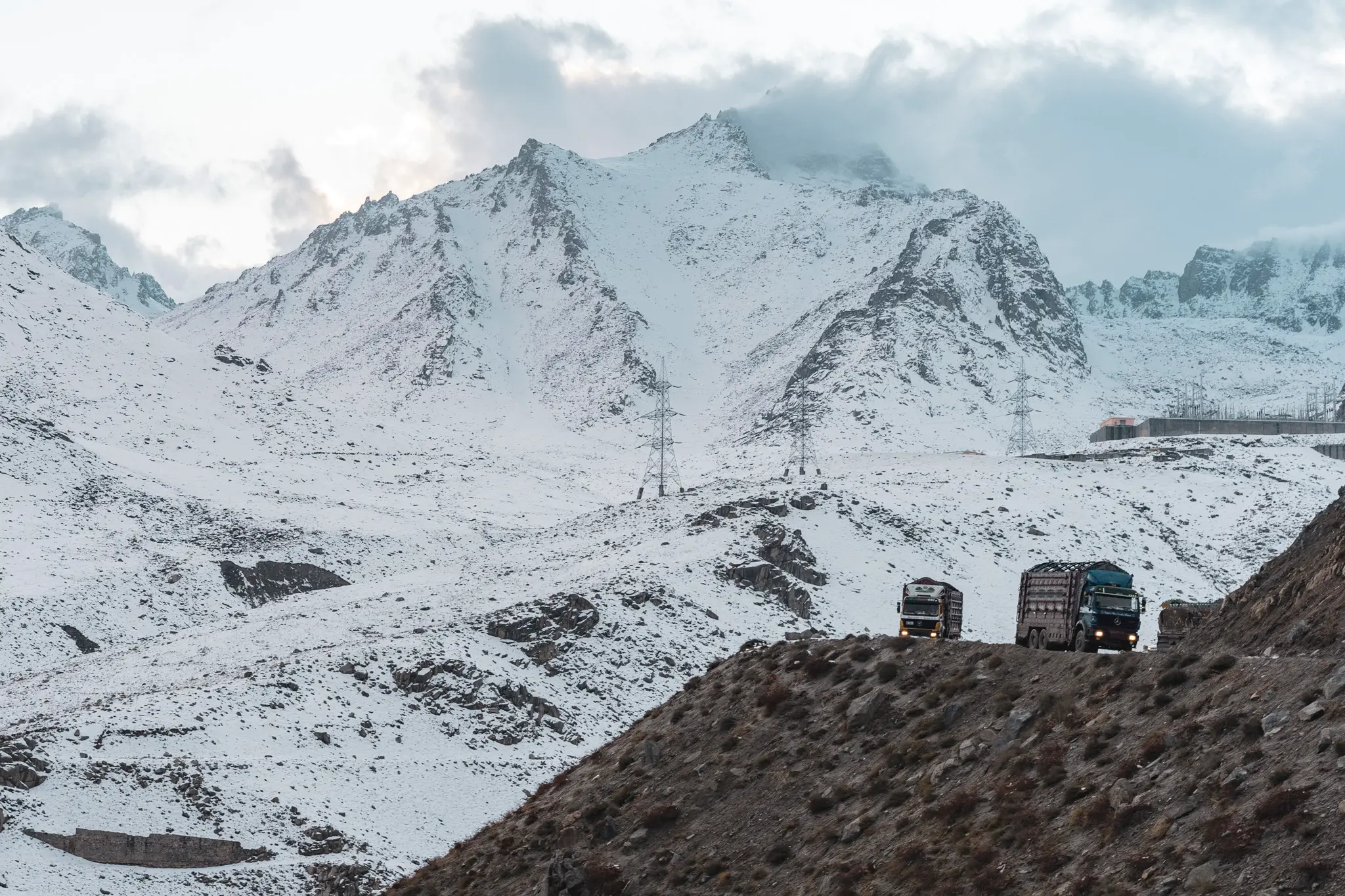
How much does travel in Afghanistan cost?
While Afghanistan is one of the poorest countries in the world, it certainly isn’t one of the cheapest to travel to.
There is very little travel infrastructure in Afghanistan, and almost all of it is geared towards employees of NGOs. Overland travel is unsafe, so expensive flights are often the only option to get around.
Because of this, travel in Afghanistan tends to cost anywhere from $40 to $70 per day.
Here are some sample costs:
- Accommodation – $15-25 per day for a single or double room is the standard rate throughout Afghanistan. If you’re looking for a place with a lot of security, costs can increase to a couple hundred a night.
- Food – $5 – $15 per day. Local street food is very cheap, although there are nicer international restaurants in Kabul where you can spend a bit more.
- Taxis – You’ll need to use taxis to get around Kabul, as well as to/from the airport in other cities. A 15-minute ride in Kabul will usually cost around $4-6. You’ll need to negotiate.
- Flights – If you want to visit more than one city, you will need to take a domestic flight at some point. On most main routes (Kabul -Herat or Kabul – Mazar-e-Sharif), tickets are about $100 each way. Flights are one of the biggest expenses when travelling in Afghanistan.
- Entrance tickets – Usually fairly cheap. The most expensive ones are in Kabul, and these are usually around $3-4 for foreigners.
- Visas – Afghan visas cost anywhere from $80 to $250 depending on your nationality and where you apply. If visiting the Wakhan Corridor, add another $140 for two Tajikistan e-visas.
Remember, these costs are for independent travel in Afghanistan. If you choose to travel with a tour operator, you’ll likely have all these things included and only need to worry about the up-front cost.
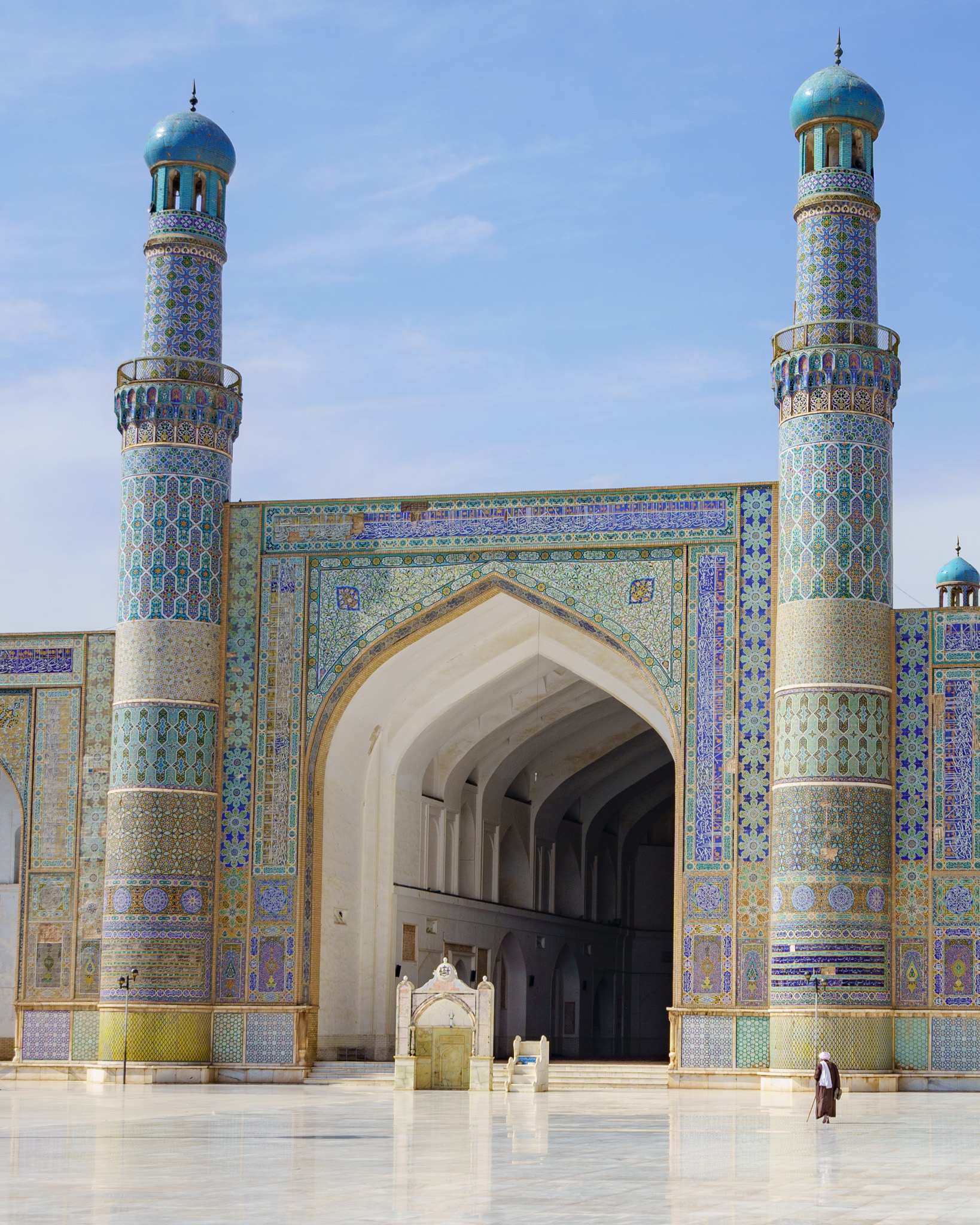
Couchsurfing in Afghanistan
Couchsurfing is a fantastic way to meet locals all over the world, and you should really try to use it when you’re in Afghanistan.
I met some amazing friends on it and they really helped answer any questions I had about their country. Afghanistan has an active Couchsurfing community and it’s one of the best places to find local insider knowledge about the latest situation in the country.
Resources for travel to Afghanistan
Before travelling to Afghanistan, I did a crap ton of research – and I highly suggest that you do too. You need to be prepared and understand what you’re getting yourself in to.
Here are some of my favourite resources for travel in Afghanistan (other than this guide, of course!):
- Lost With Purpose – My friend Alex has a wonderful guide on travel in Afghanistan and it helped me out a lot when I was planning my trip.
- UnchartedBackpacker – Steven has some great photos and info about Afghanistan.
- WikiVoyage – A ton of detailed info about visiting Afghanistan, although some is a bit out of date.
- Wakhan Corridor Guide – My travel guide to the Wakhan Corridor. Check it out for a bunch of information on travel & trekking in the Wakhan.
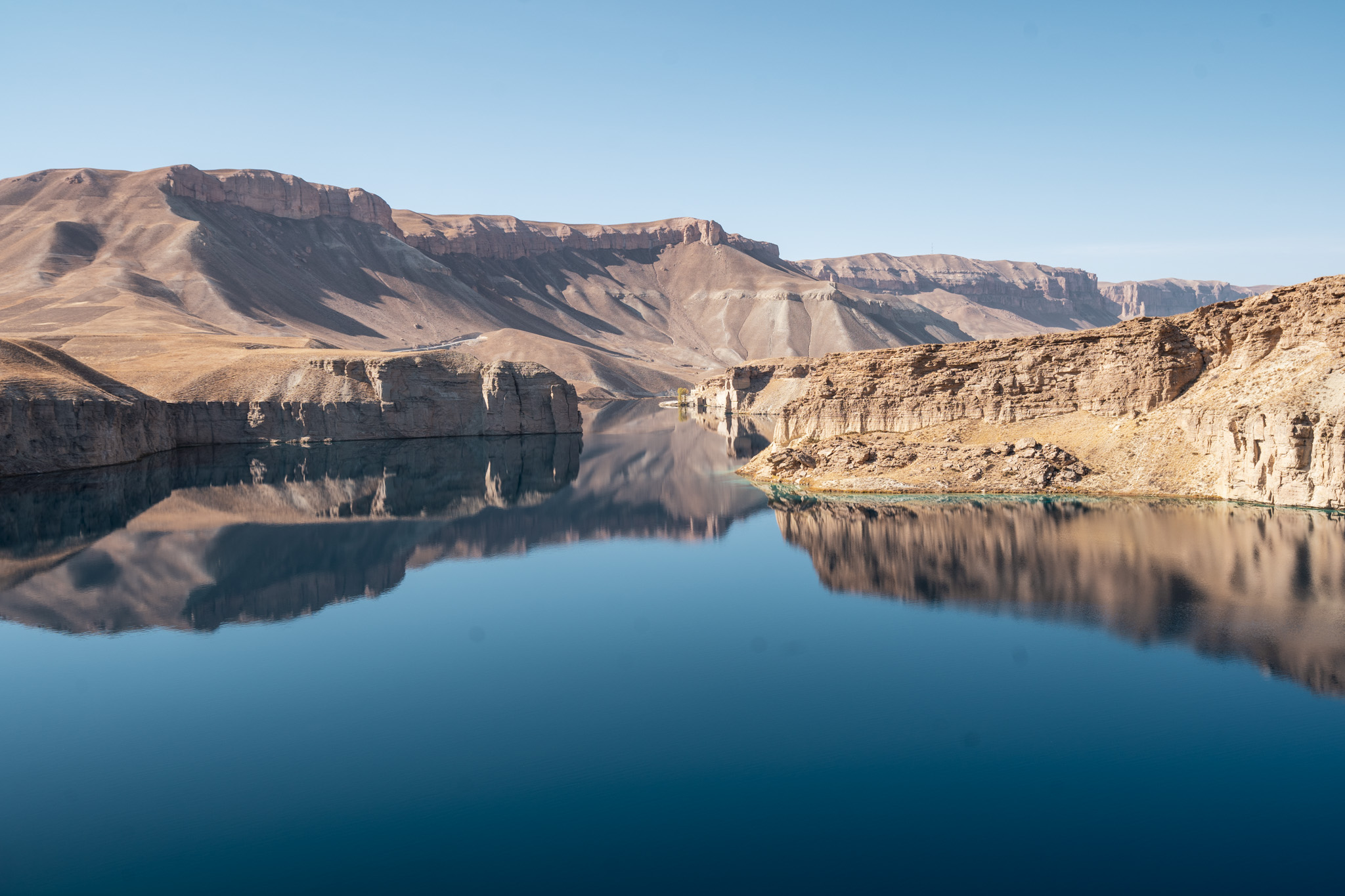
Afghanistan Travel Guide Wrap-up
I hope this post has helped you learn more about what it’s like to travel in Afghanistan! It’s an incredible country, and I only hope that one day the security situation improves enough so that more people get the chance to visit.
Feel free to ask me any questions about travelling in Afghanistan in the comments below.
Safe travels!
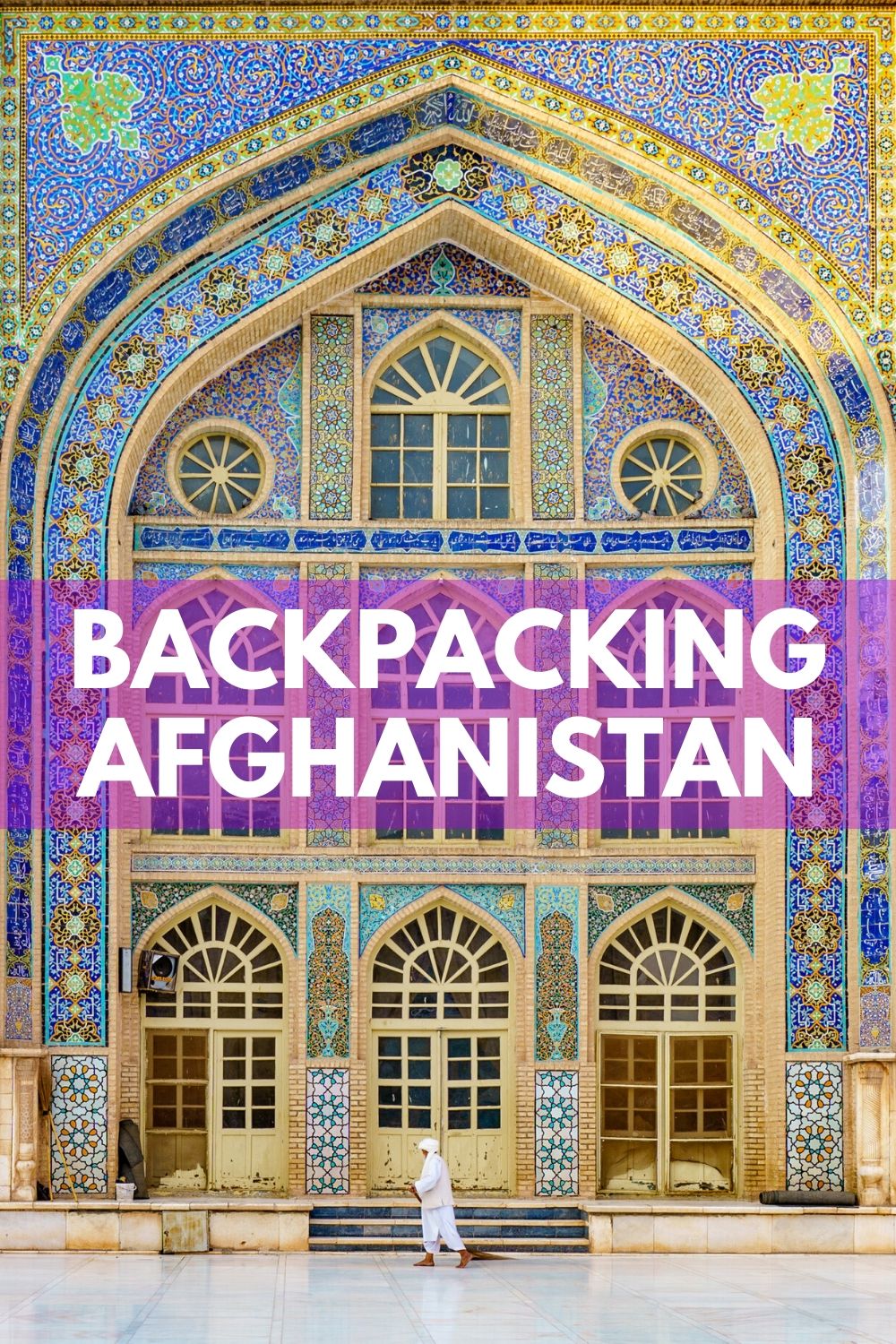
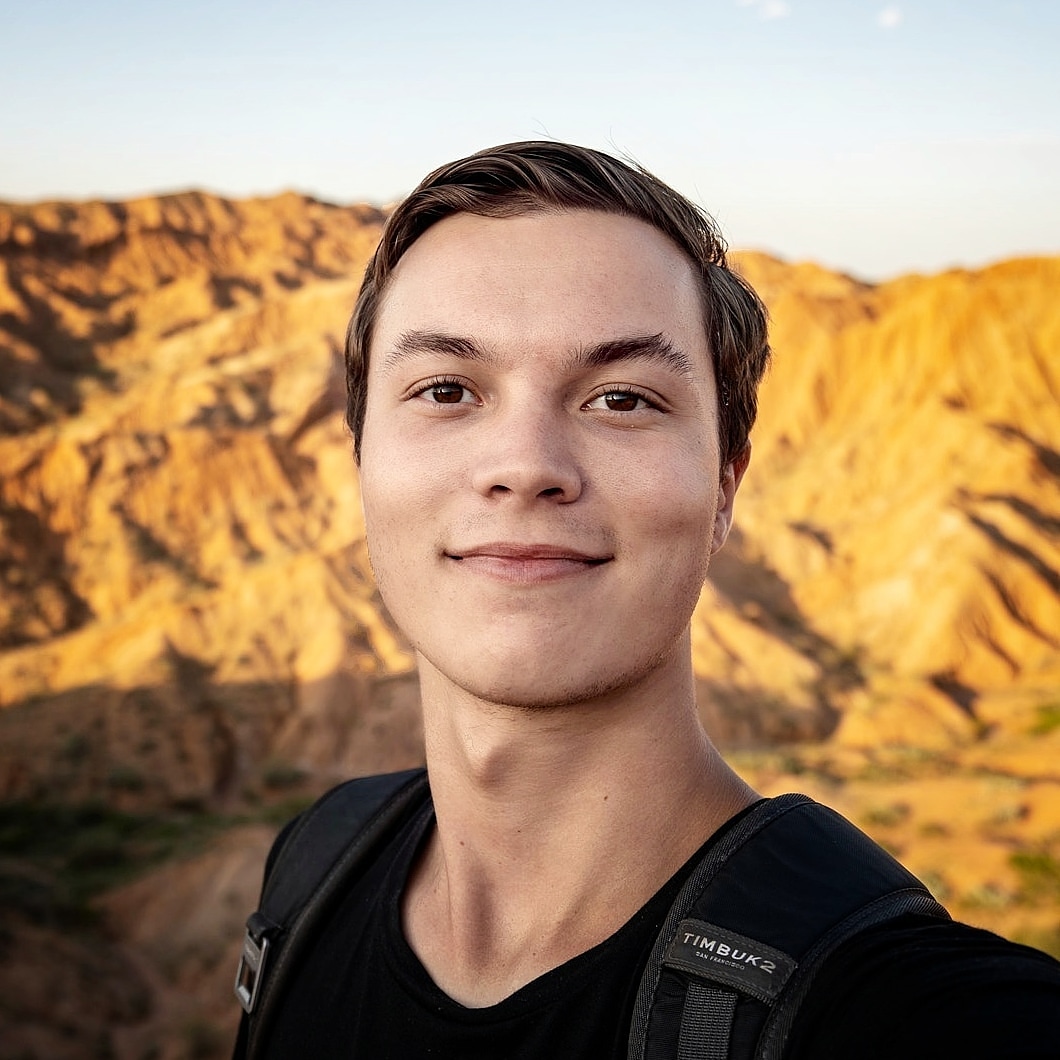
21-year old Canadian dude who loves to visit off-the-beaten-path places, climb tall mountains, and try delicious foods.
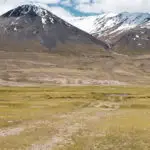
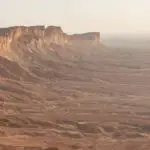
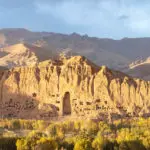
amazing !!!! it’s one of my dreams to travel to Afghanistan (one day!!!!!!) your blog is really amazing and your pictures are gorgeous too, great article 🙂
Thank you! Glad you like the blog 🙂